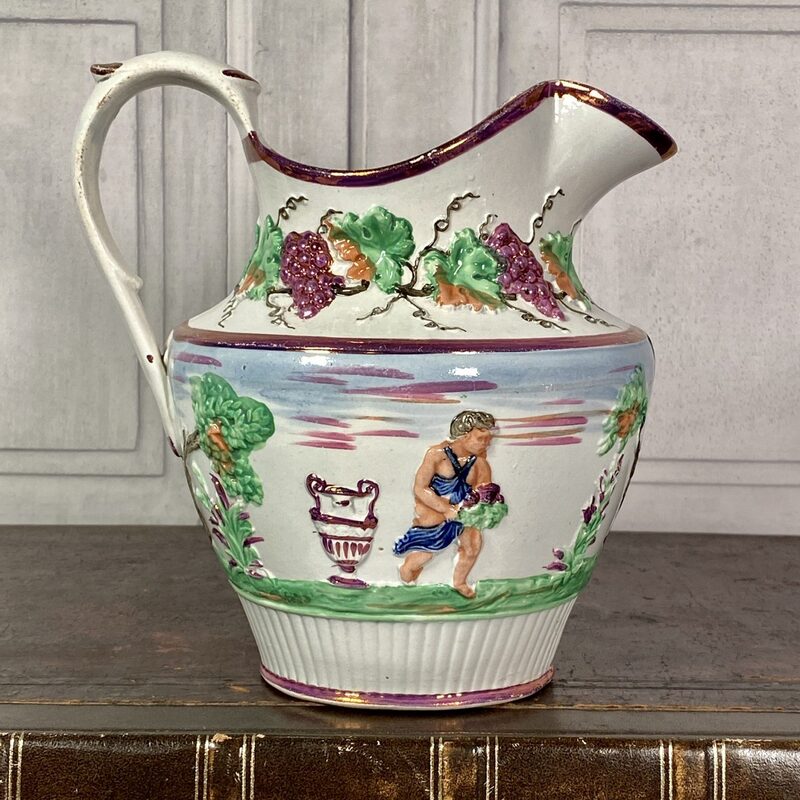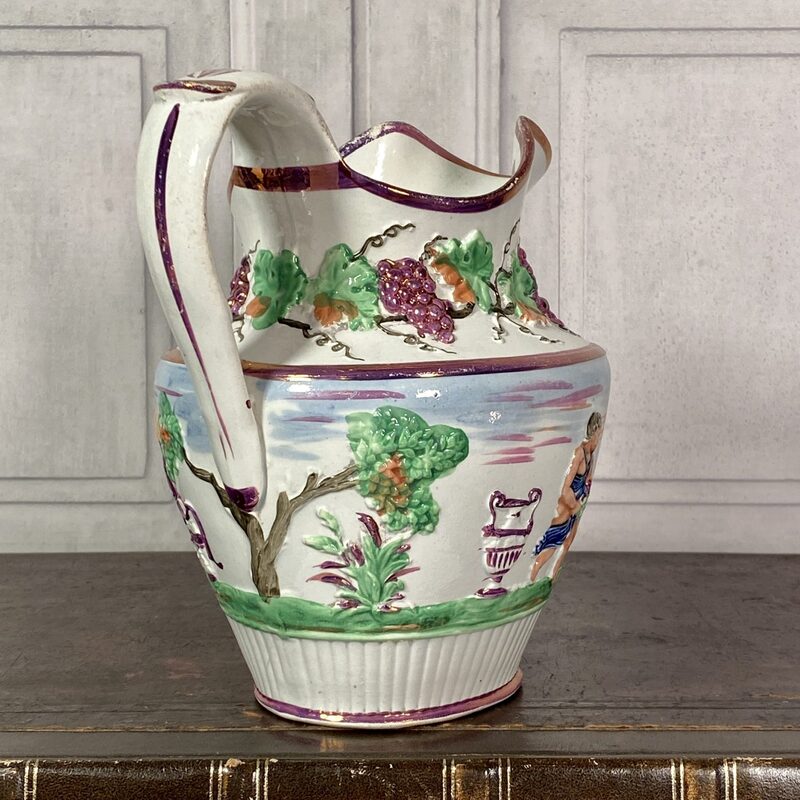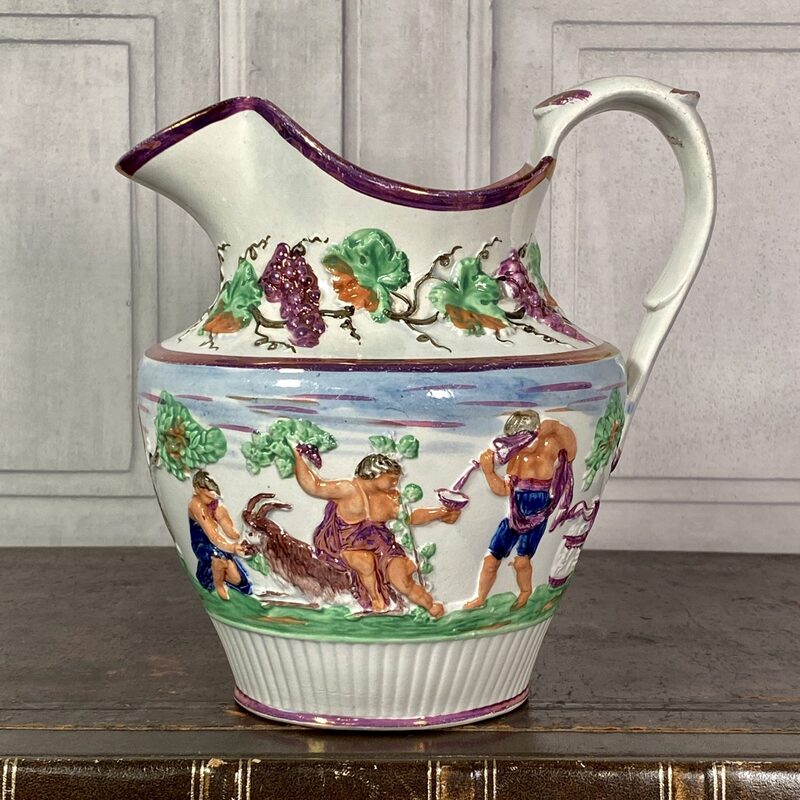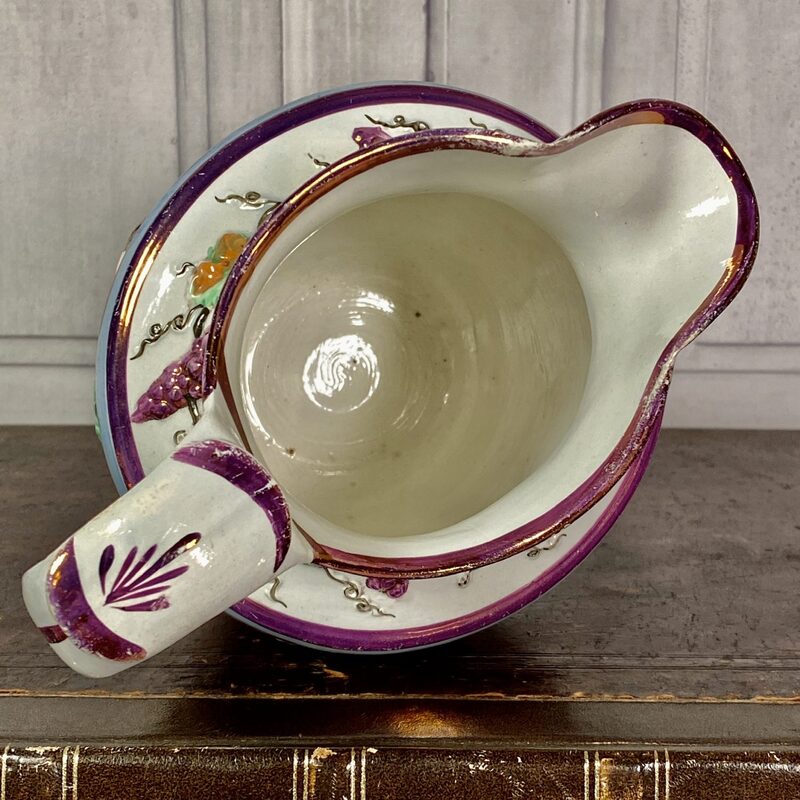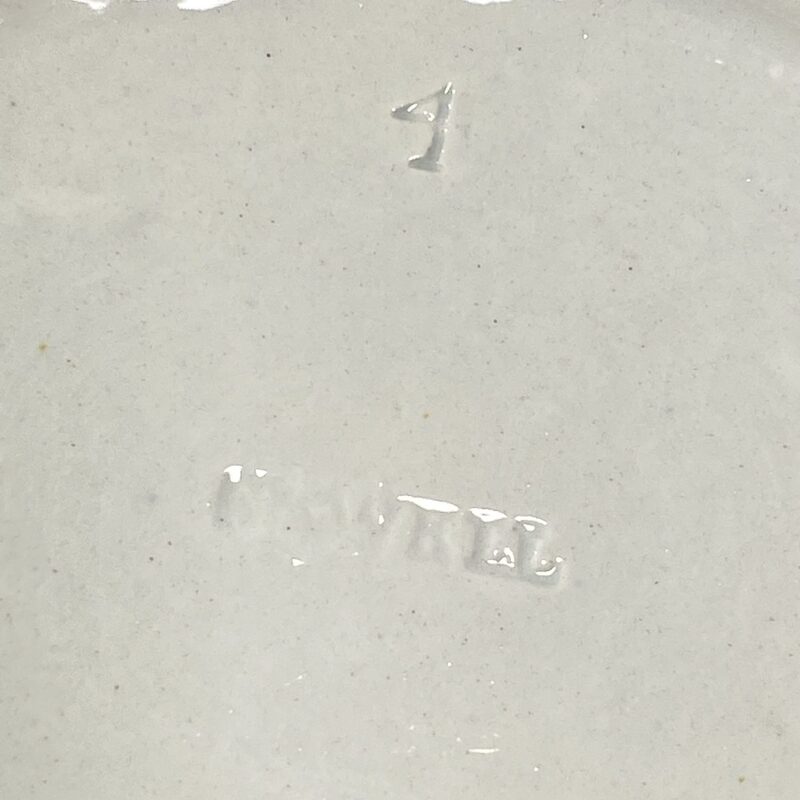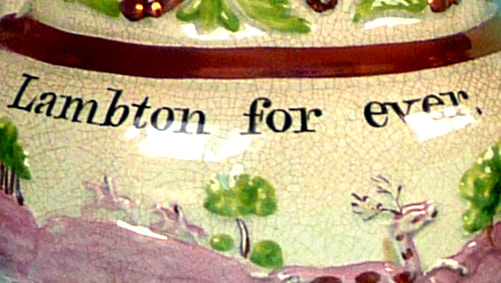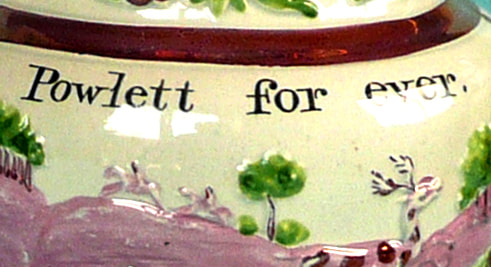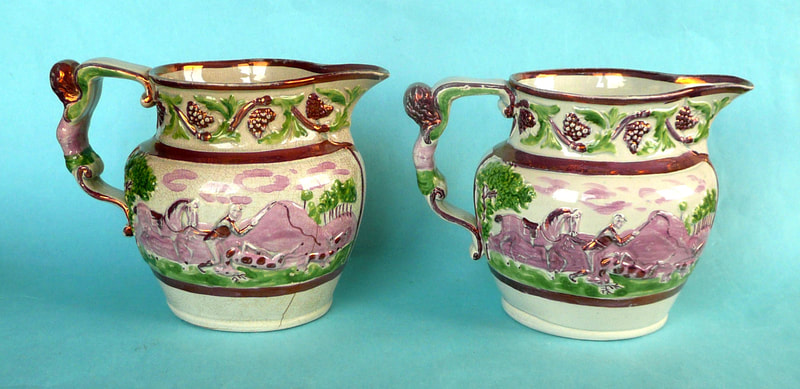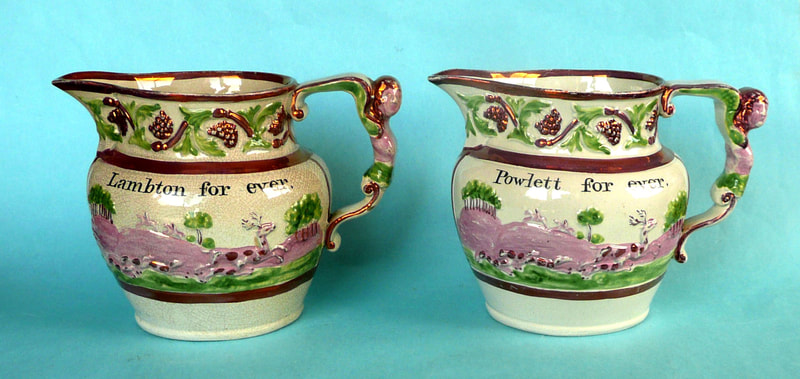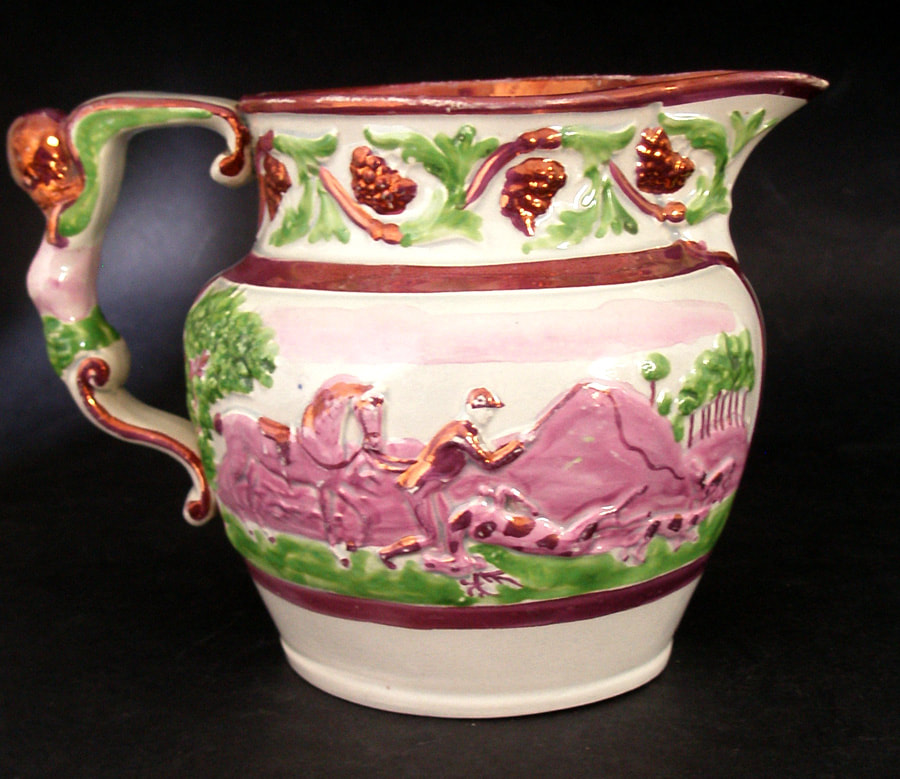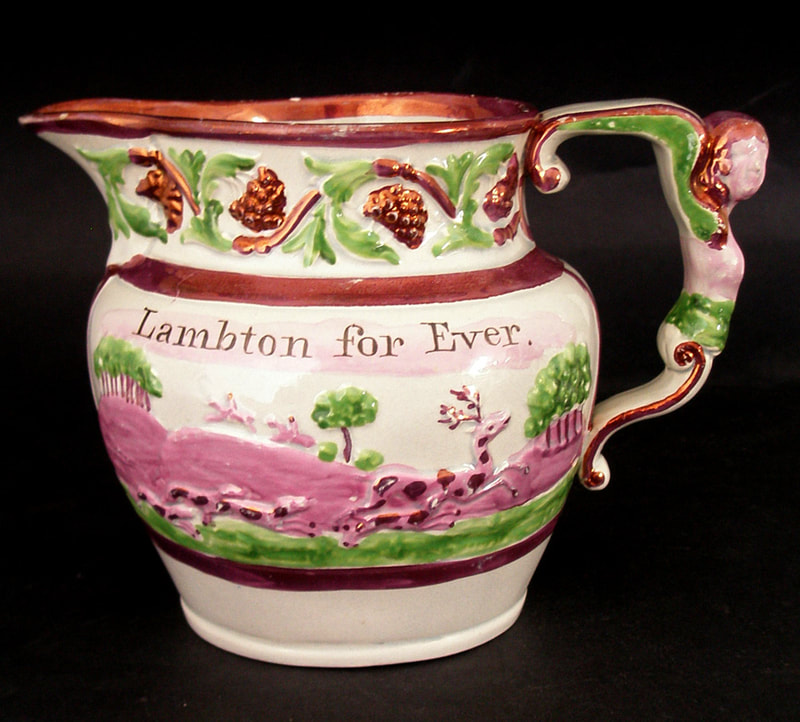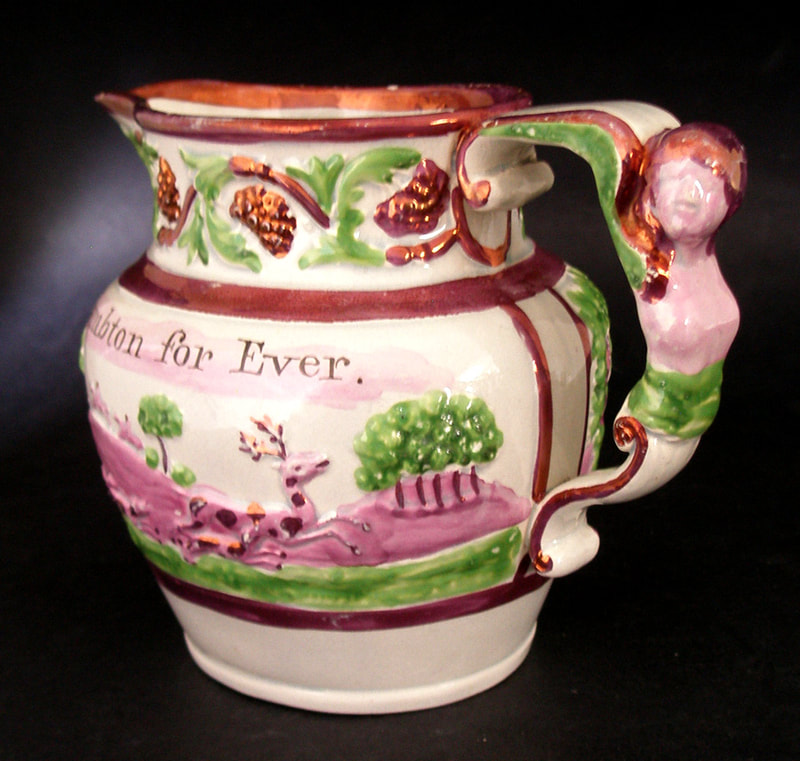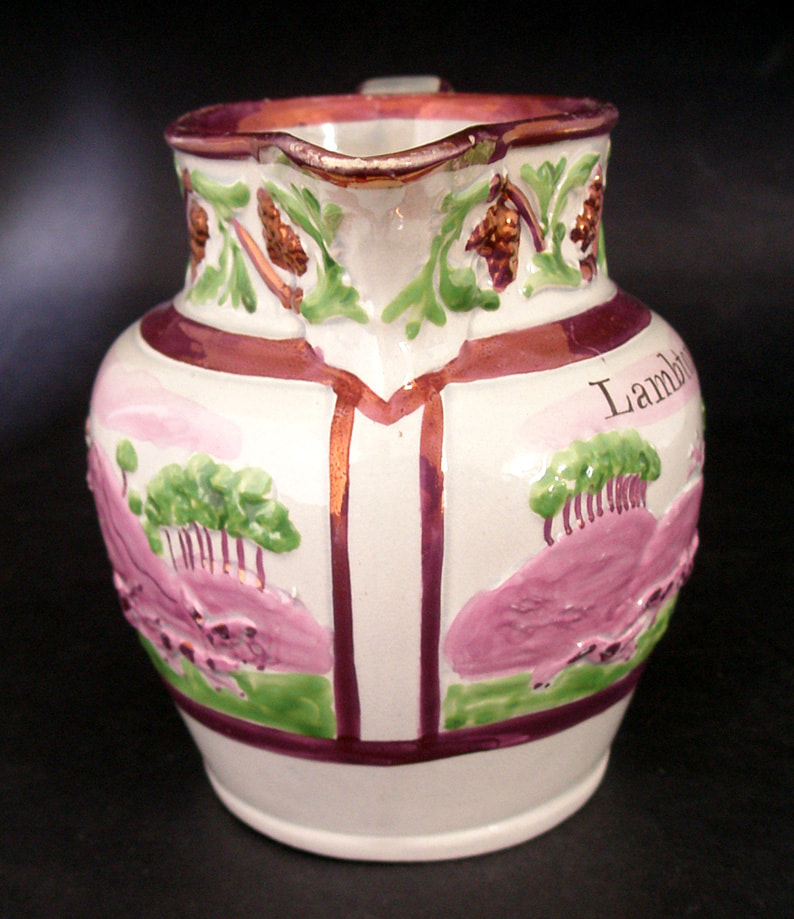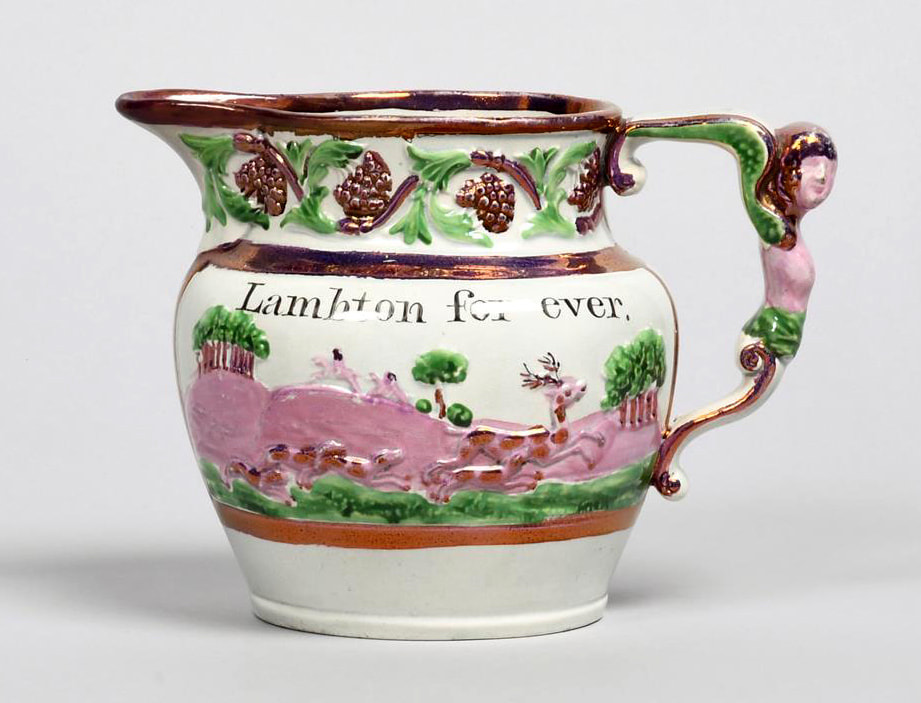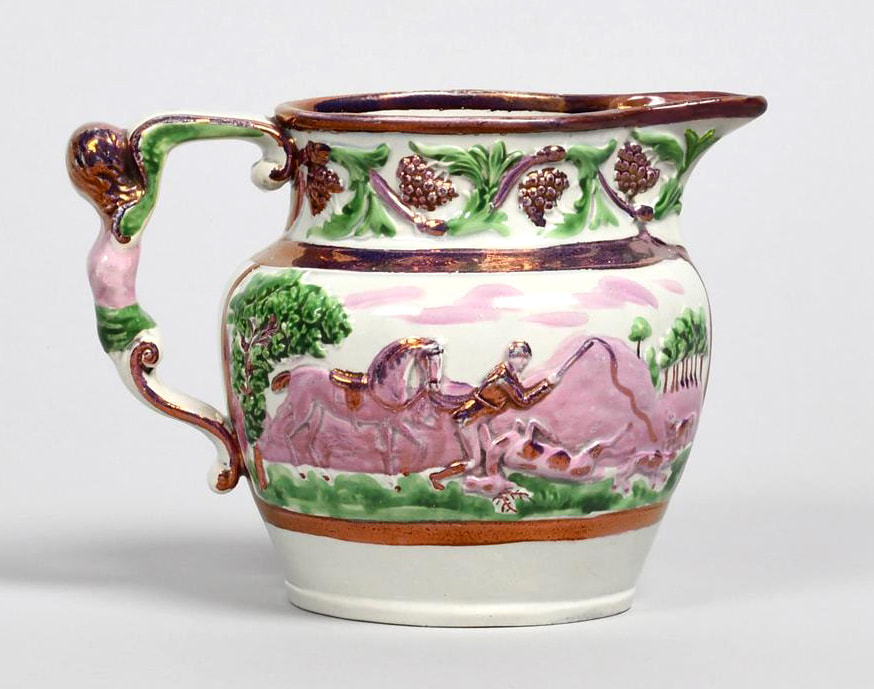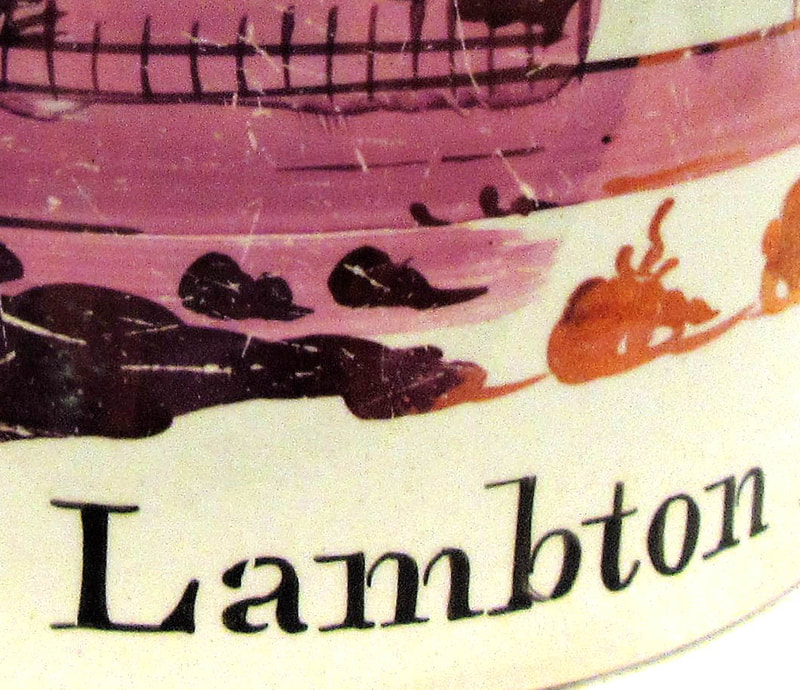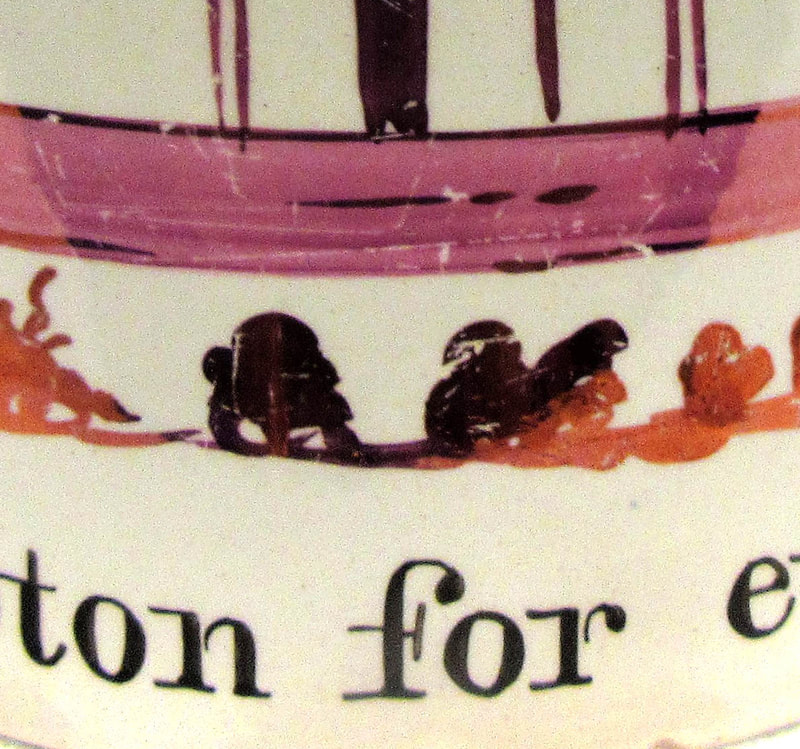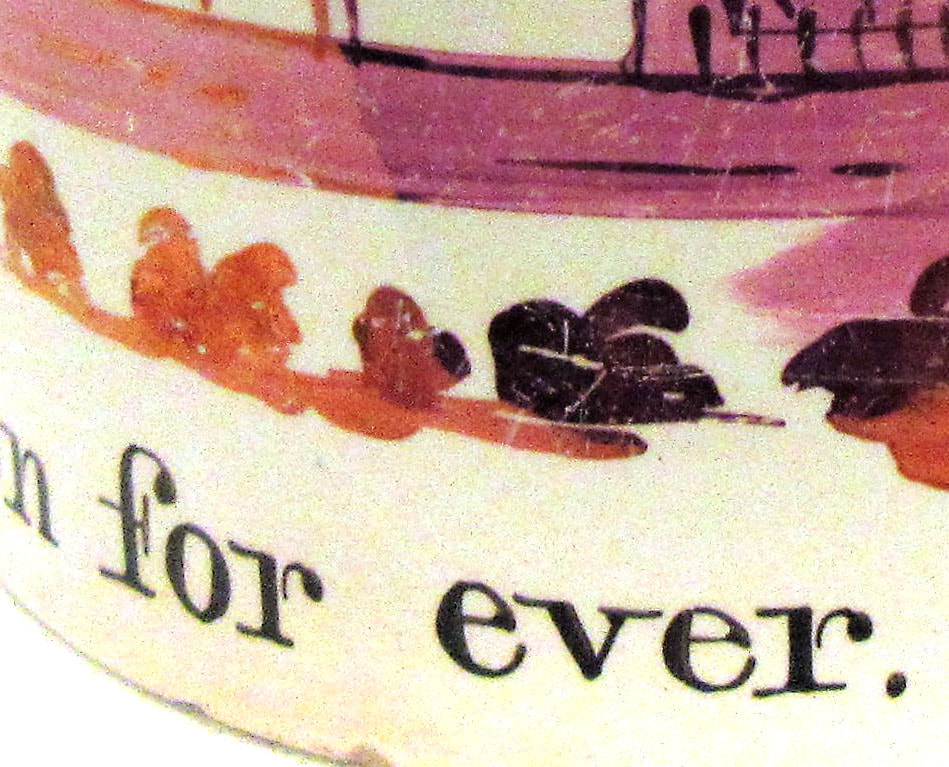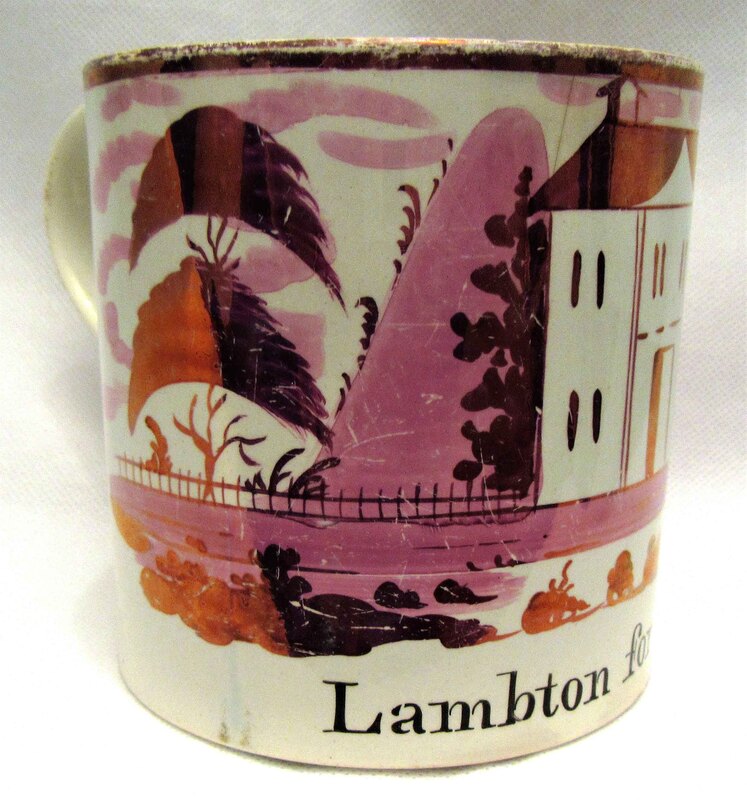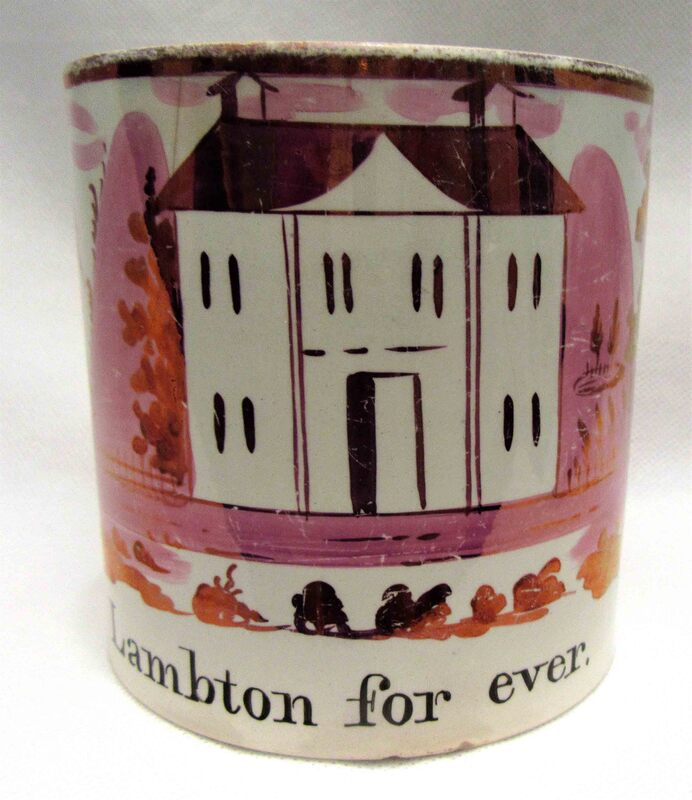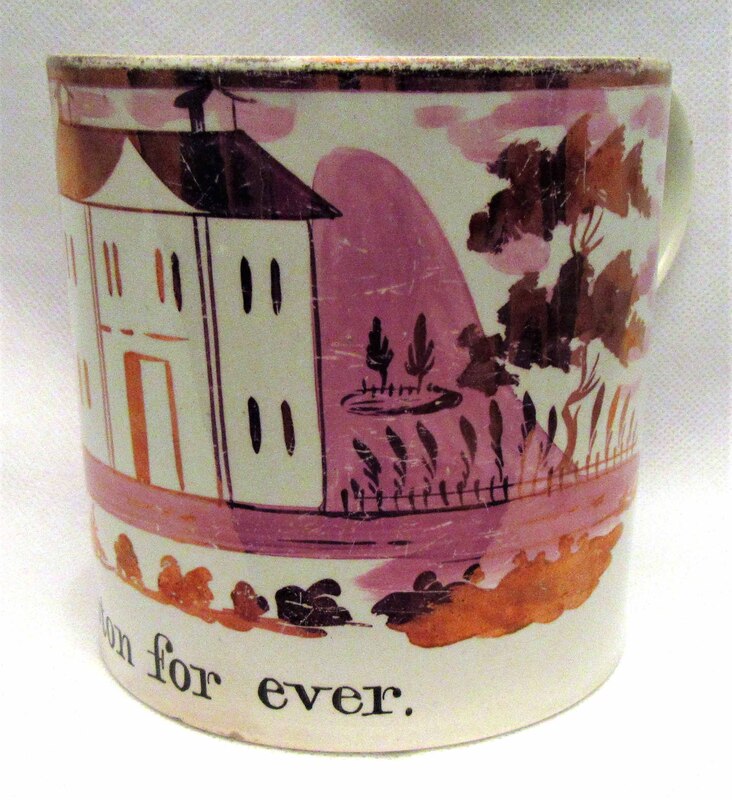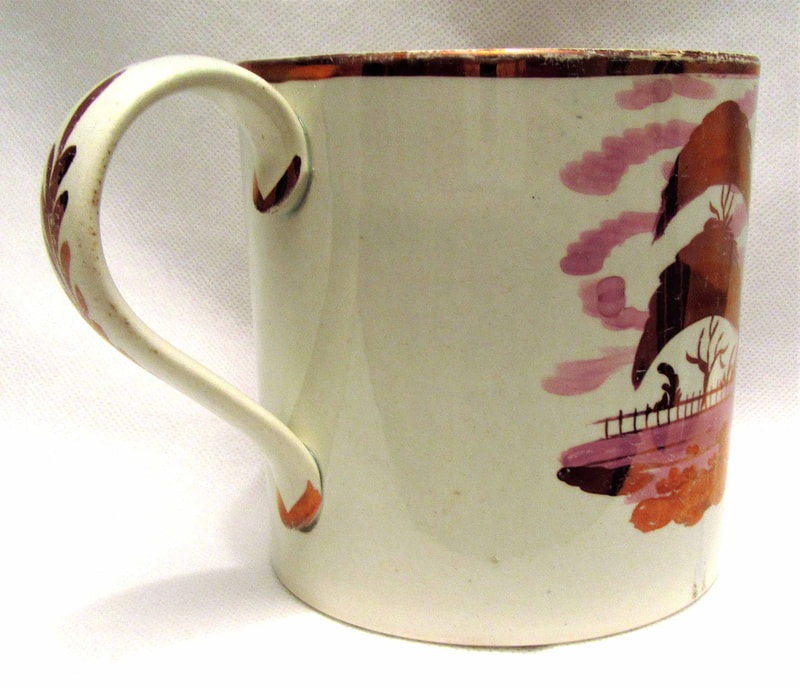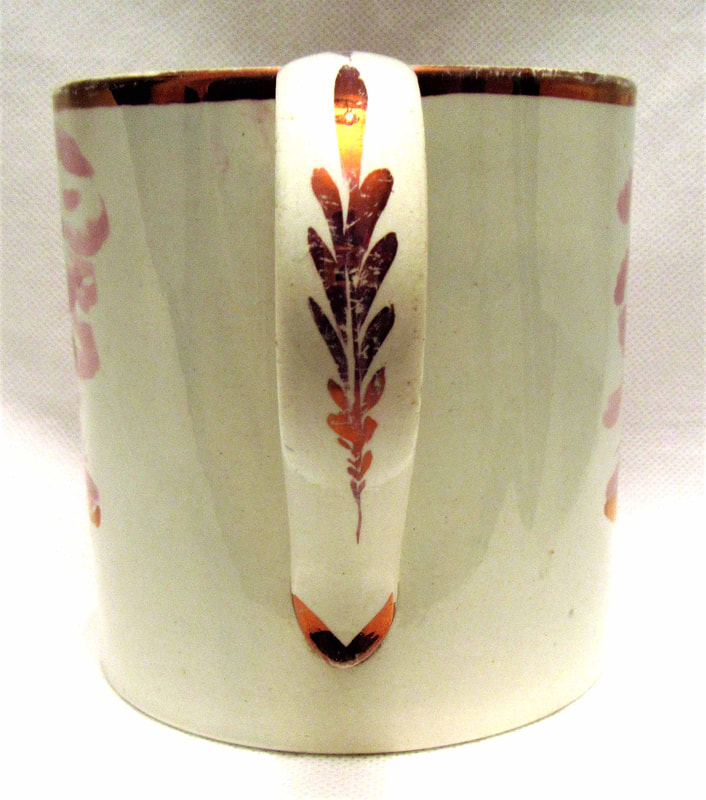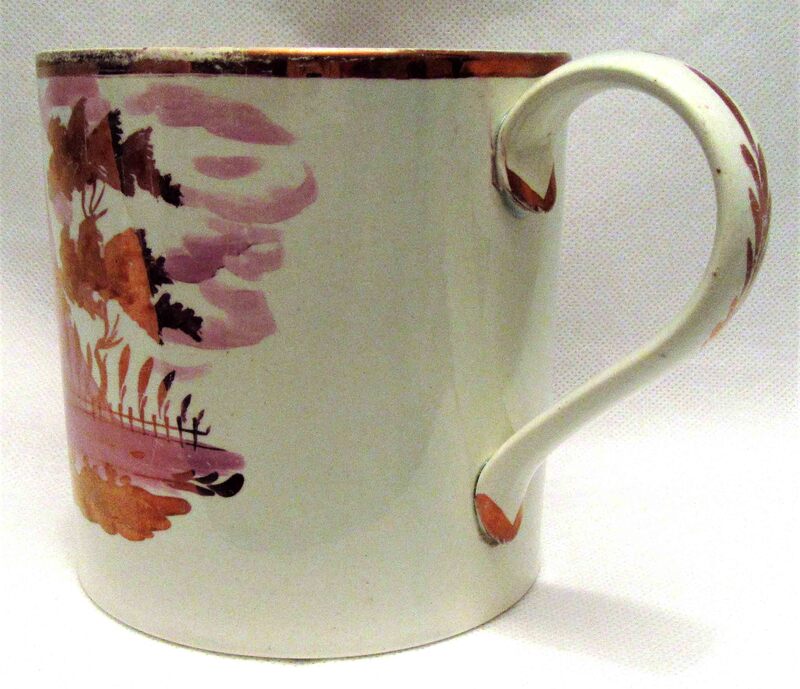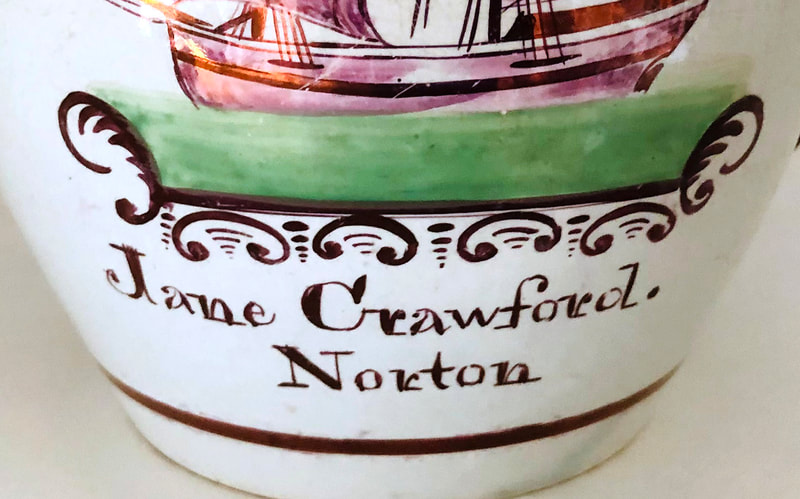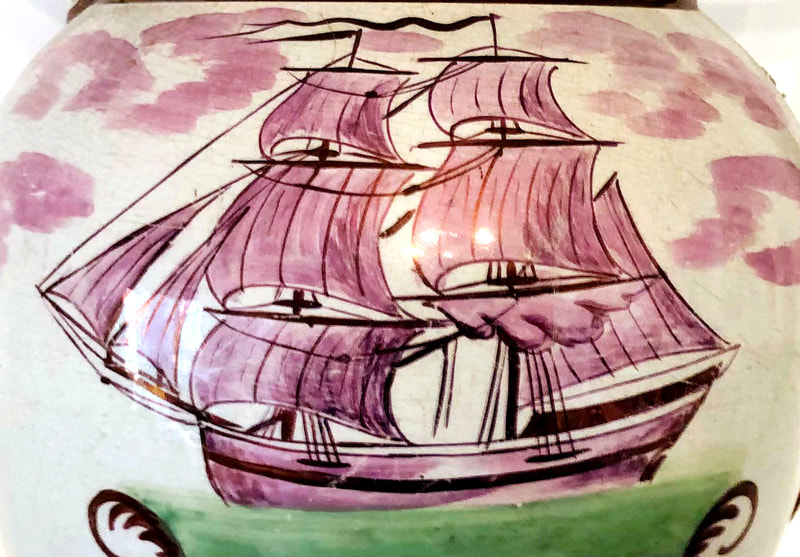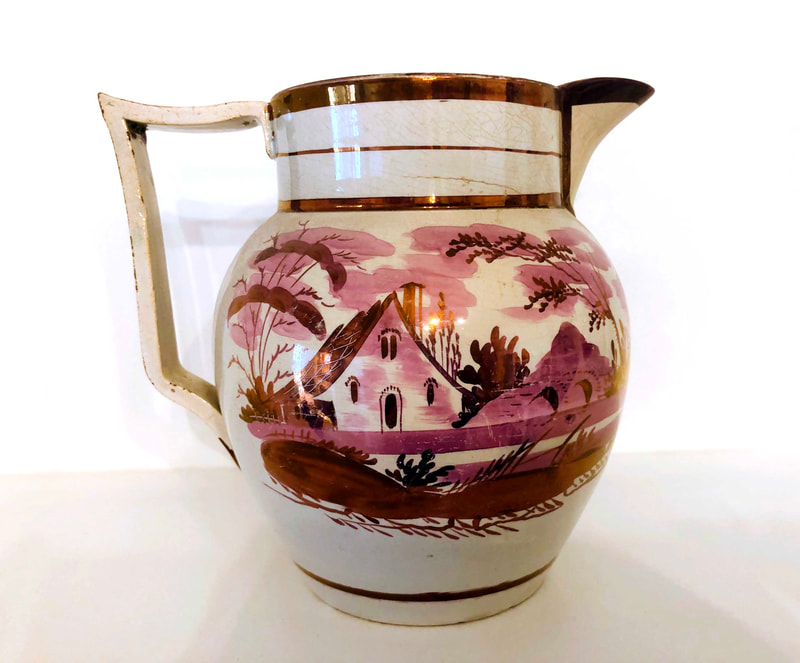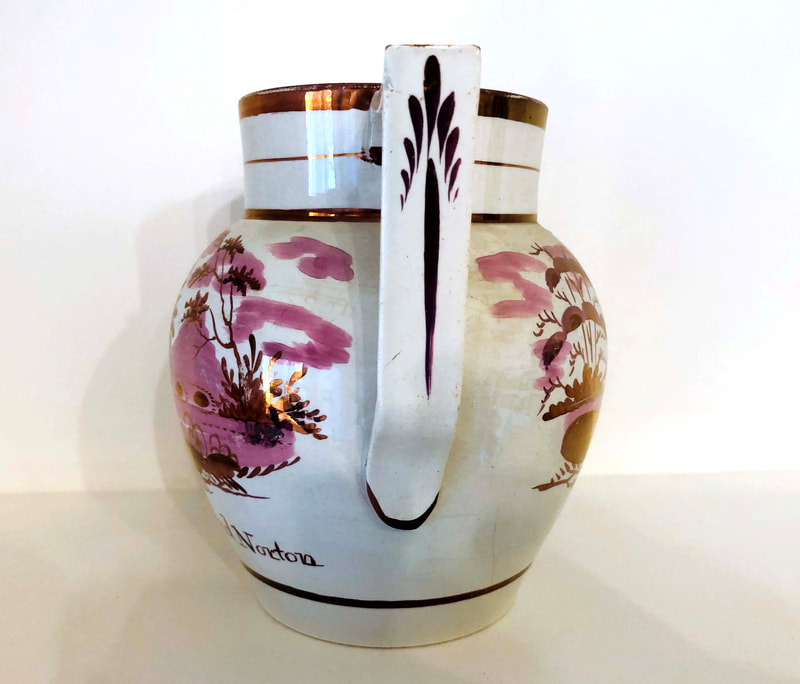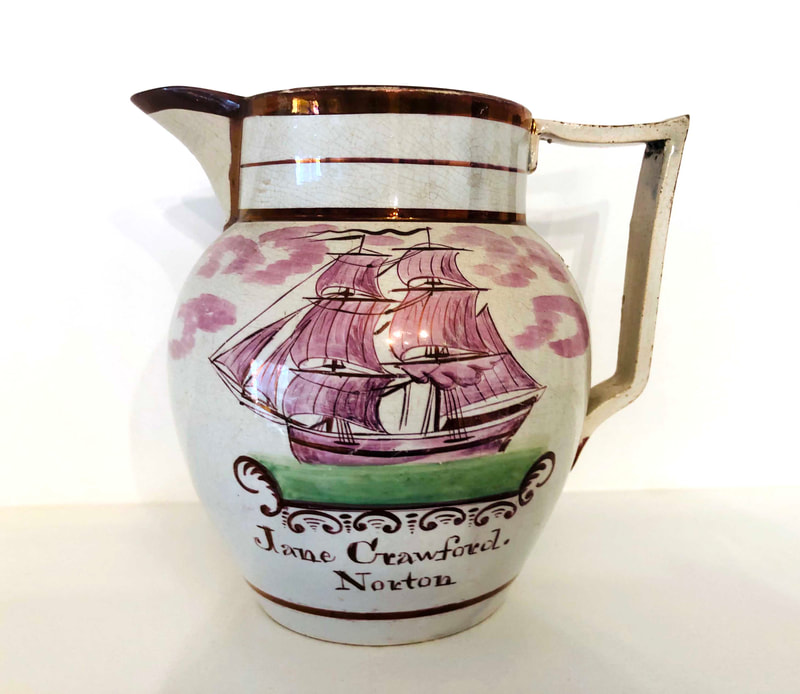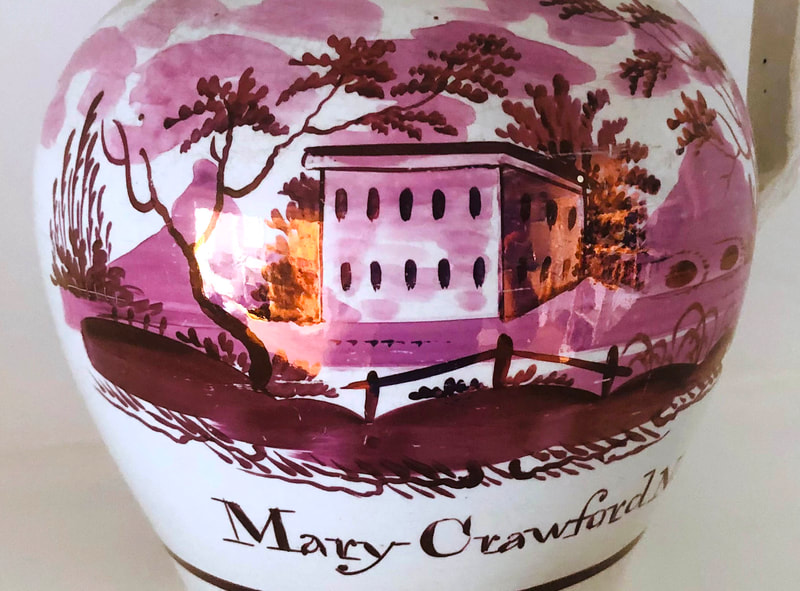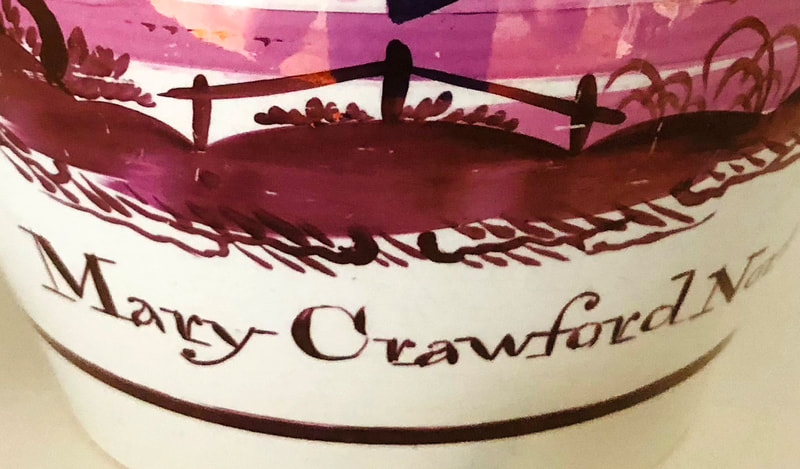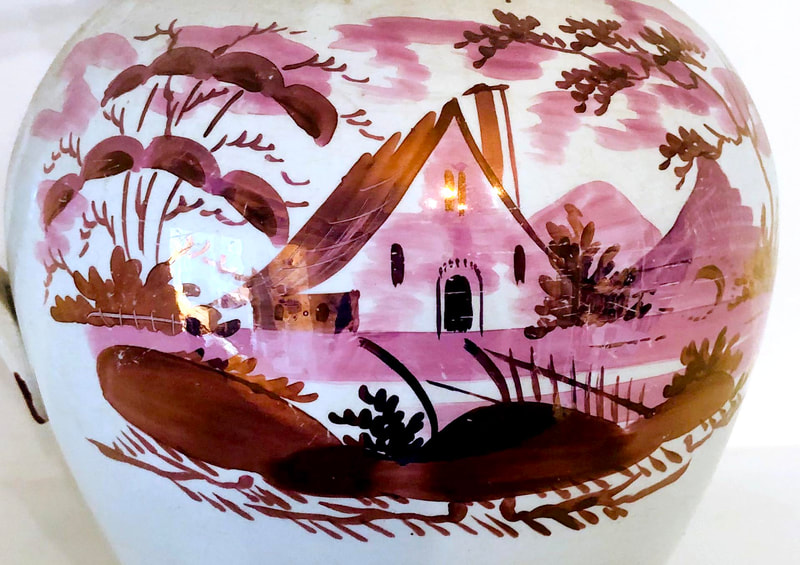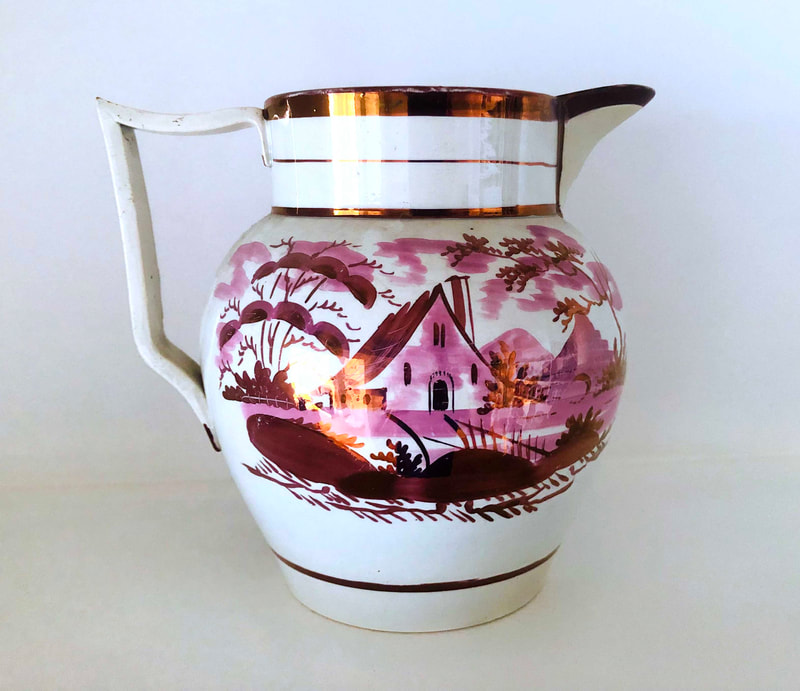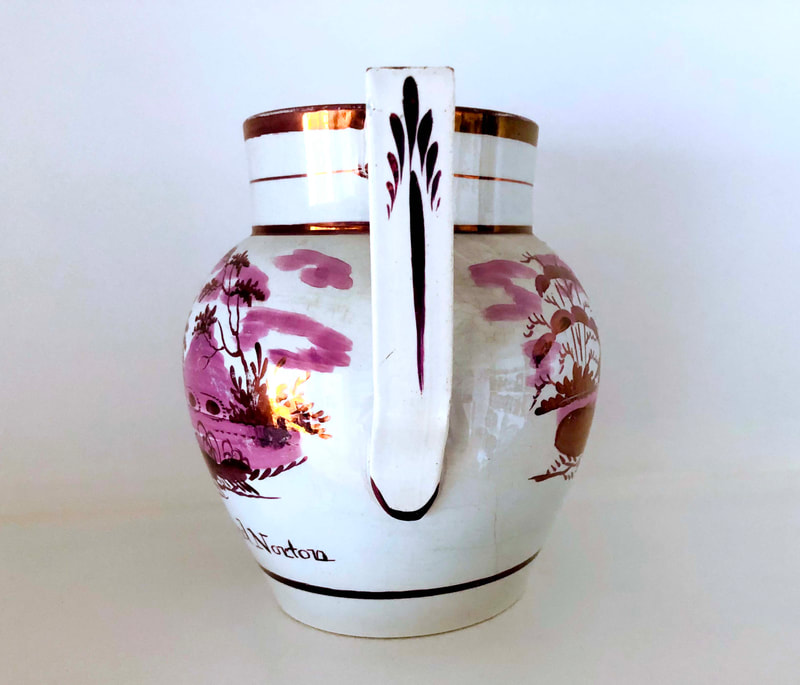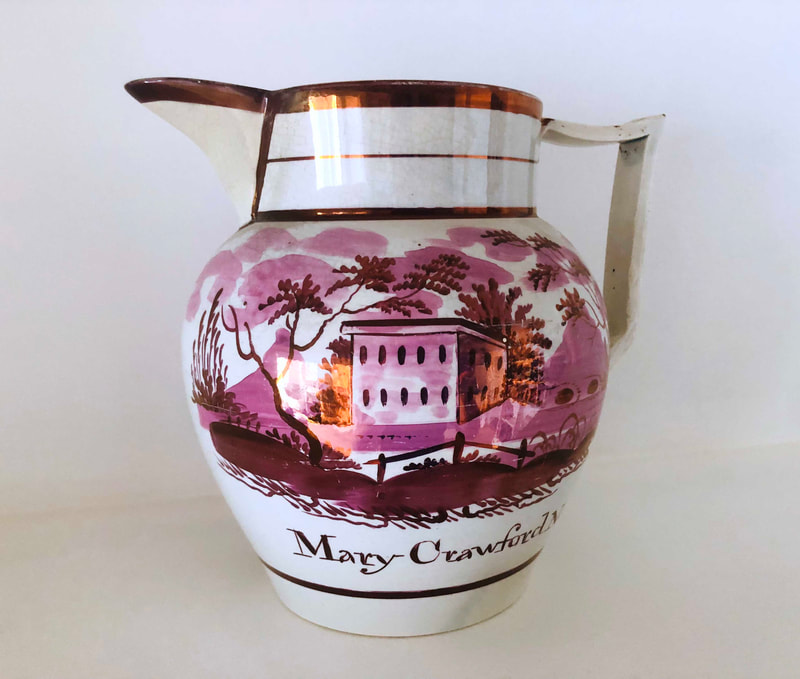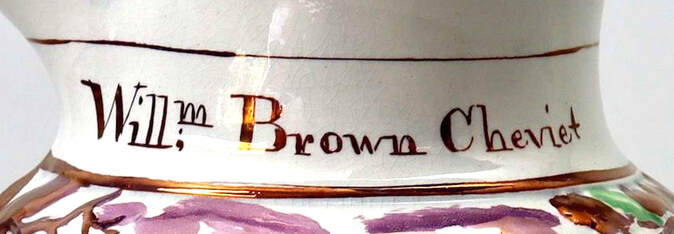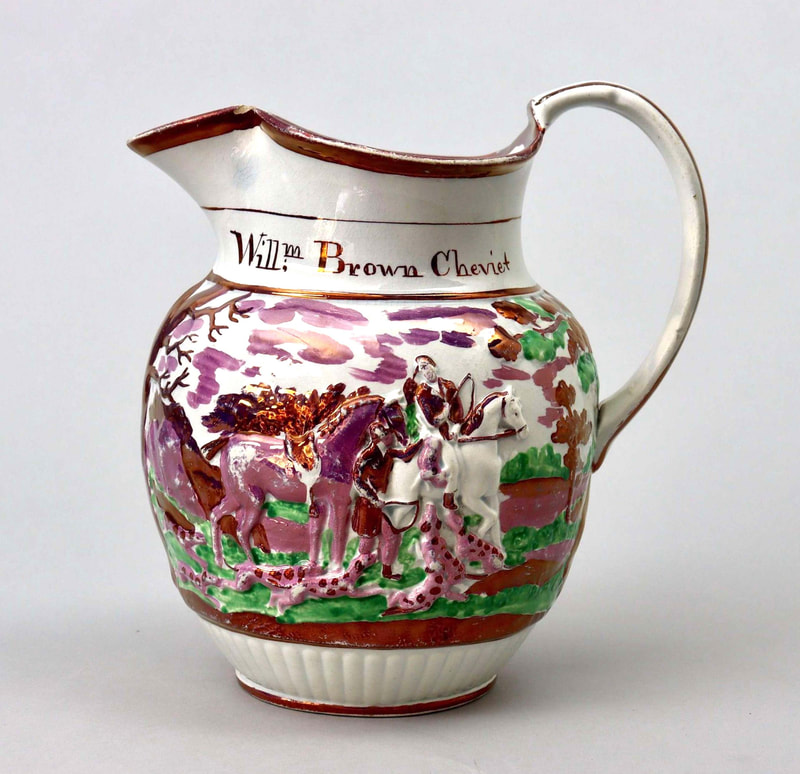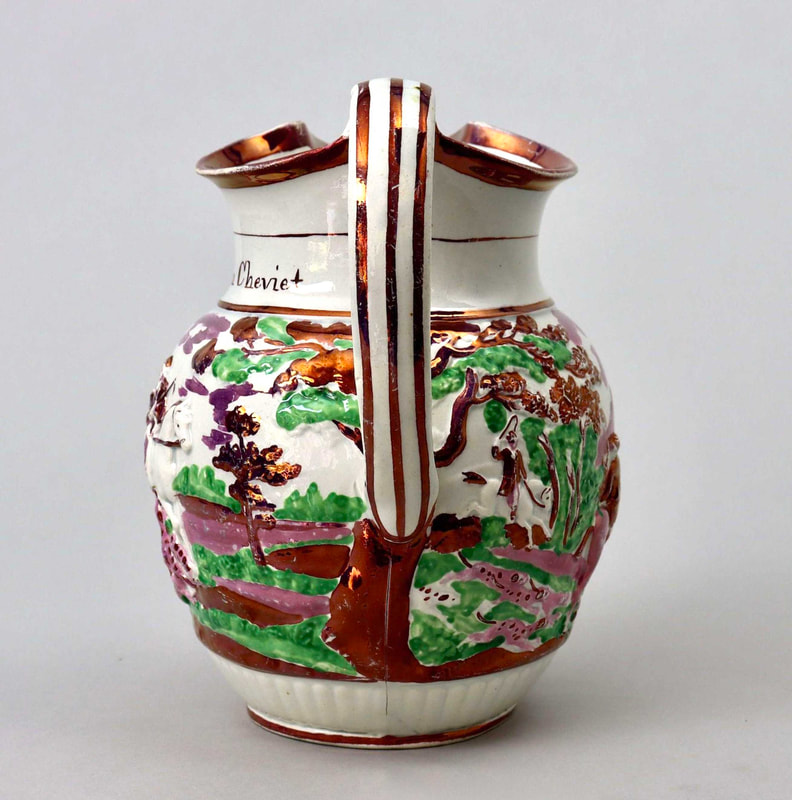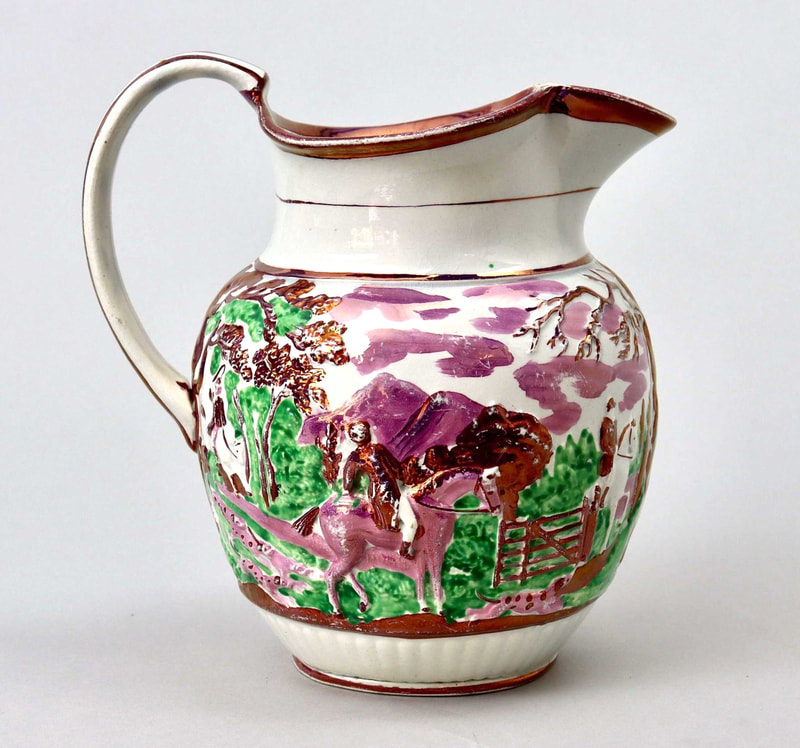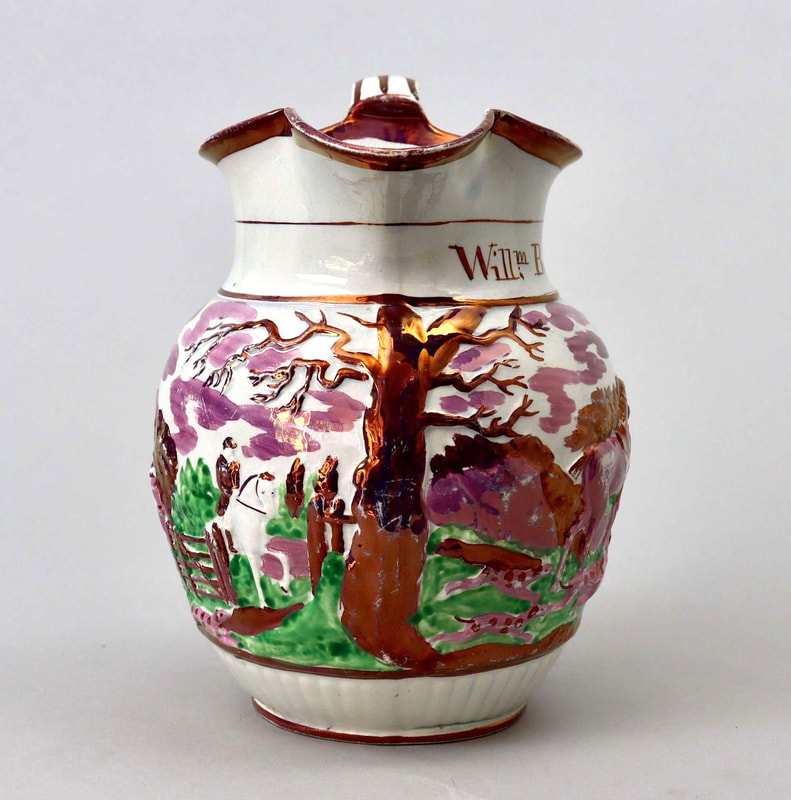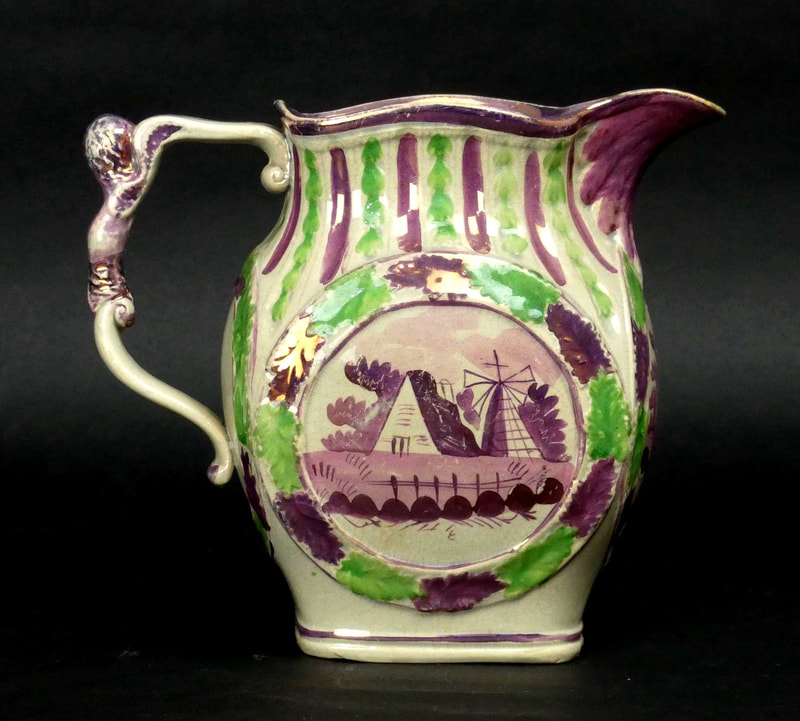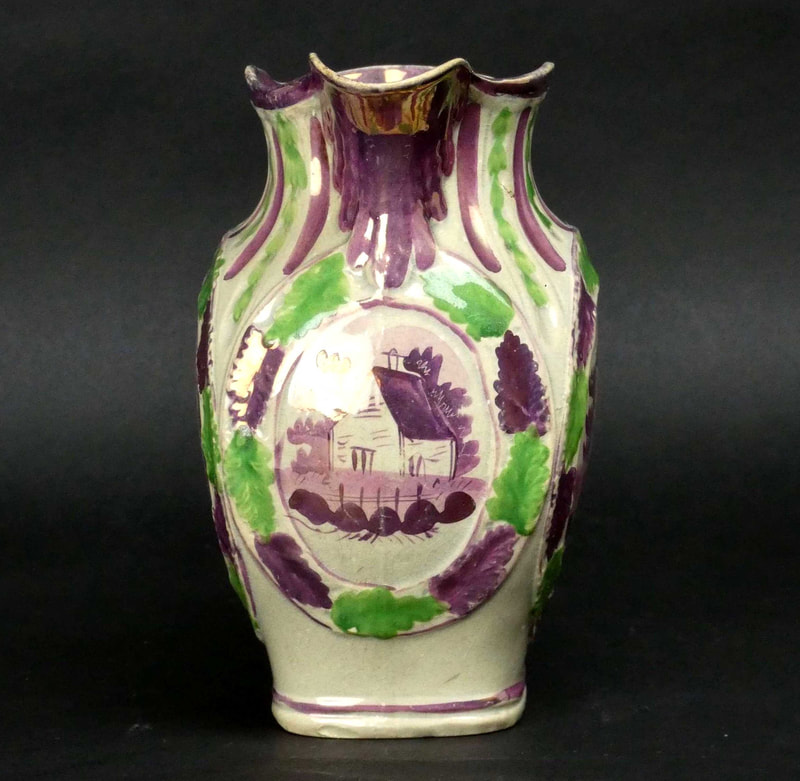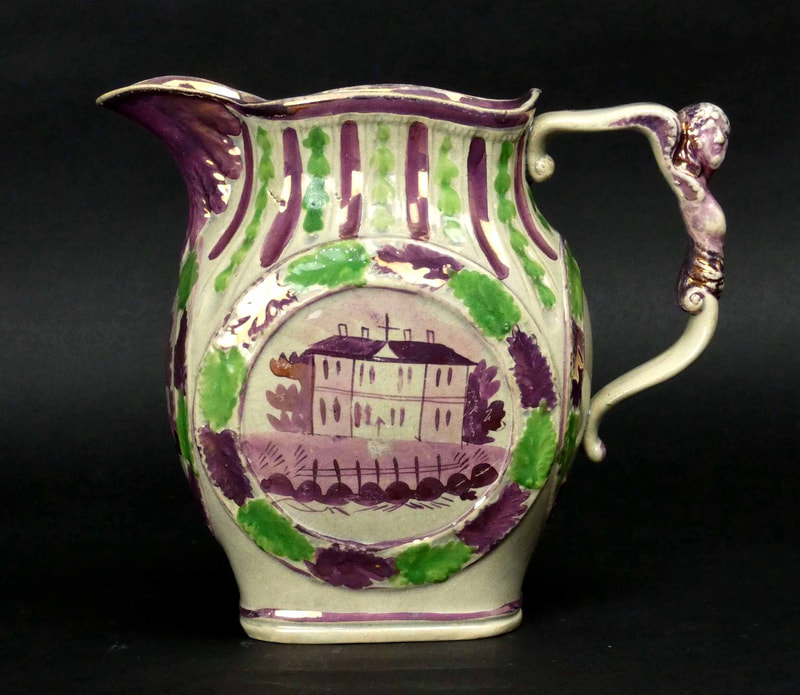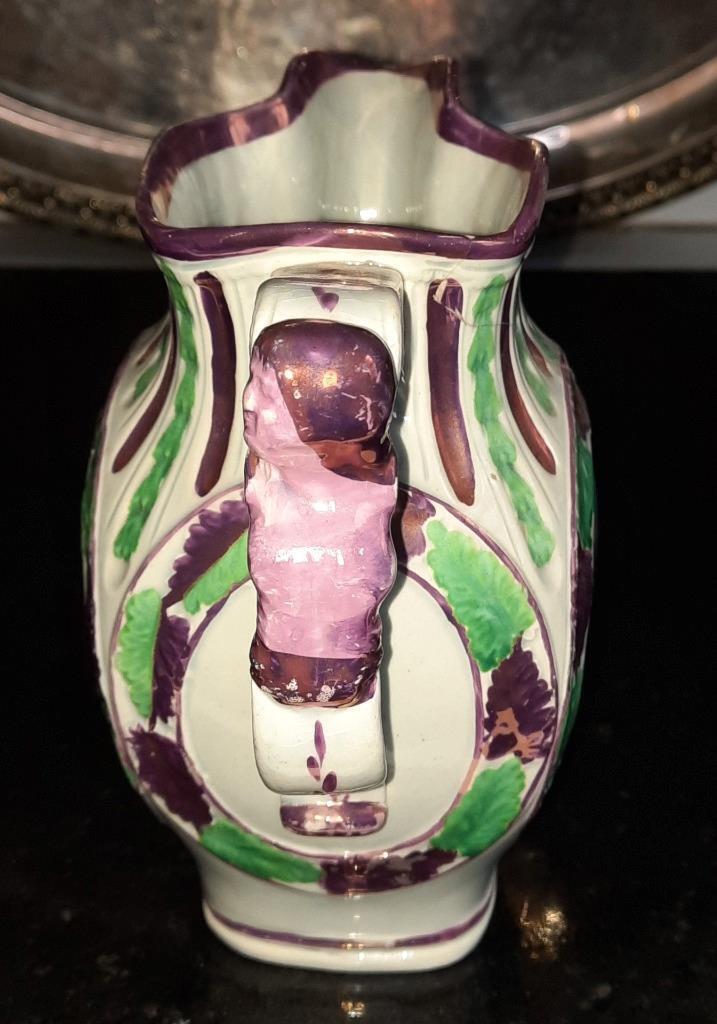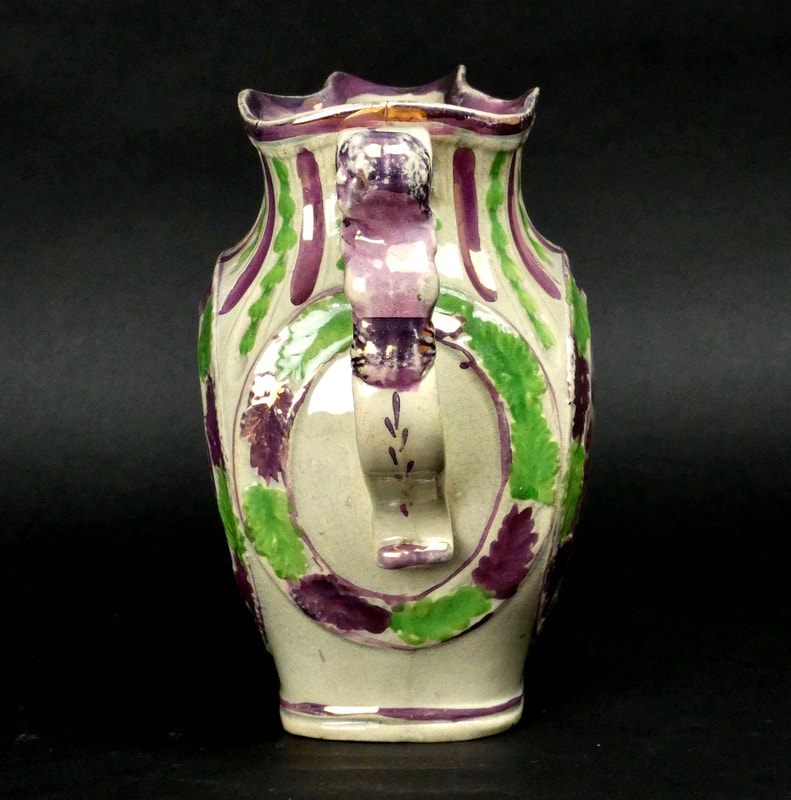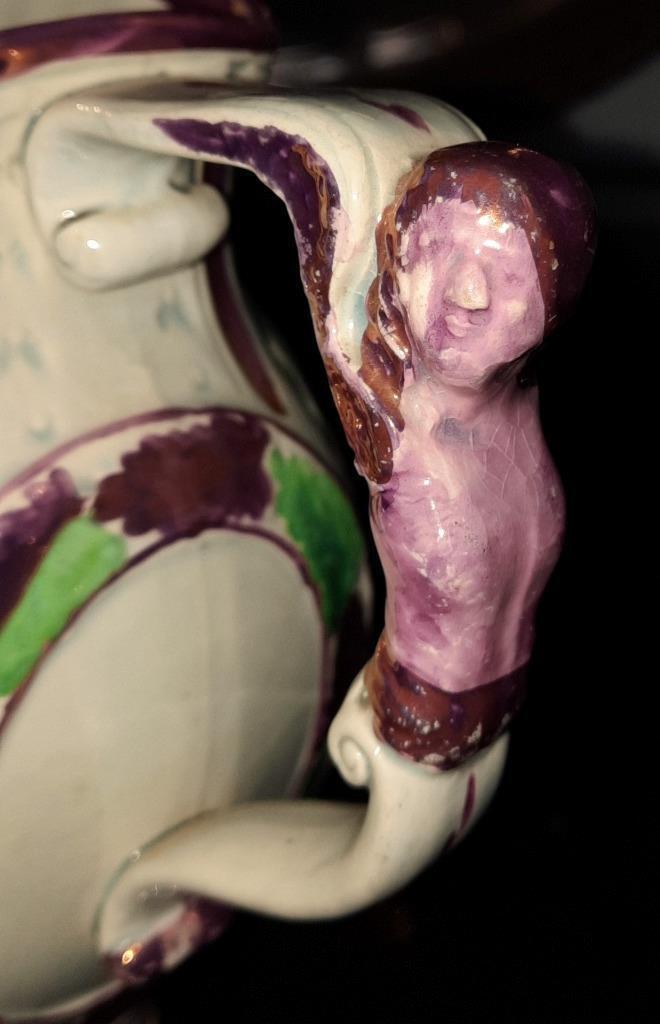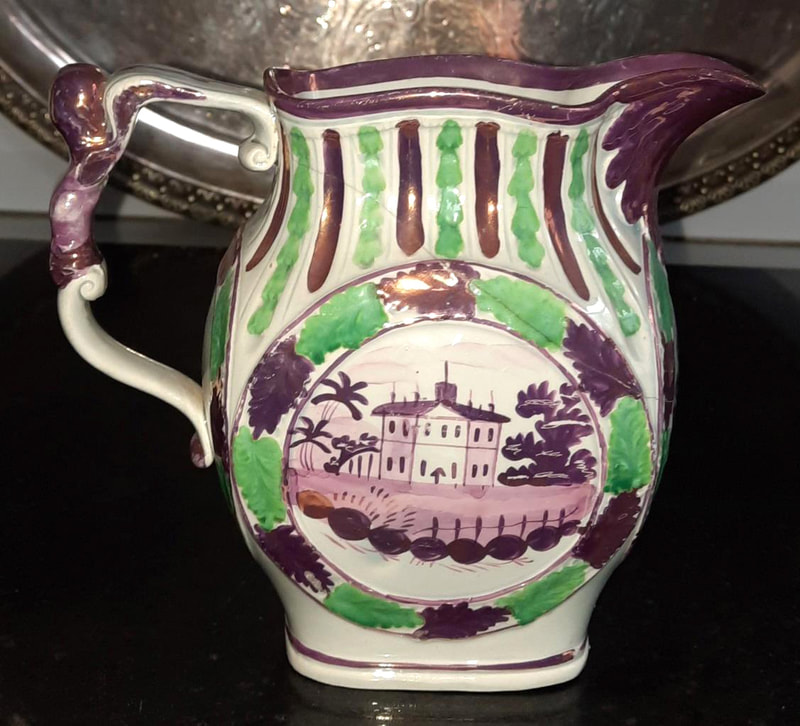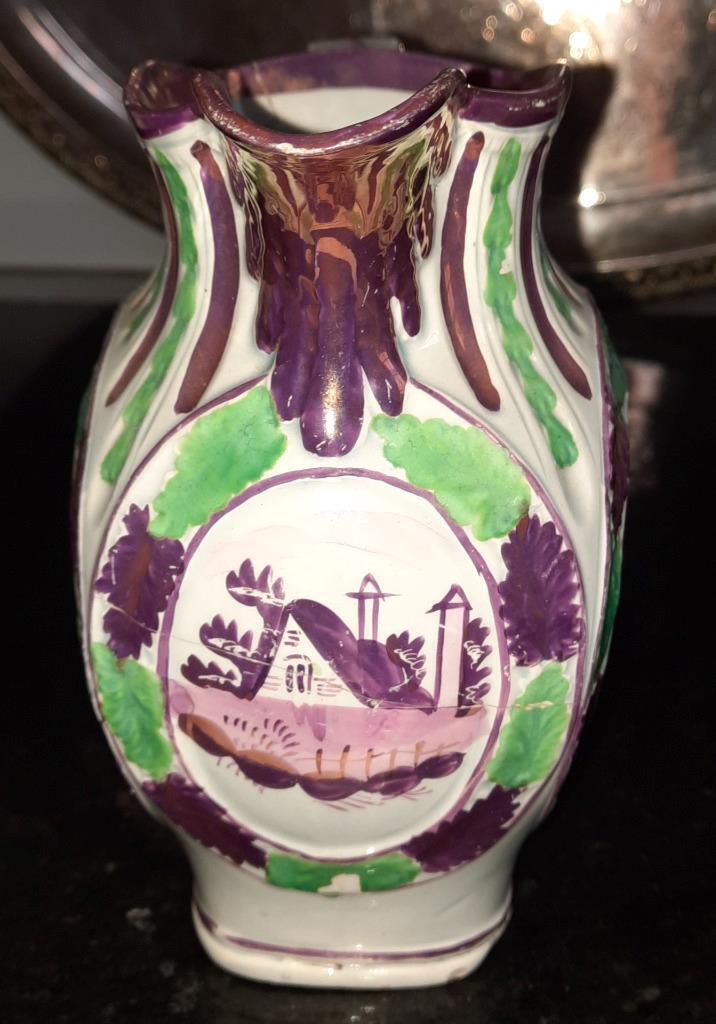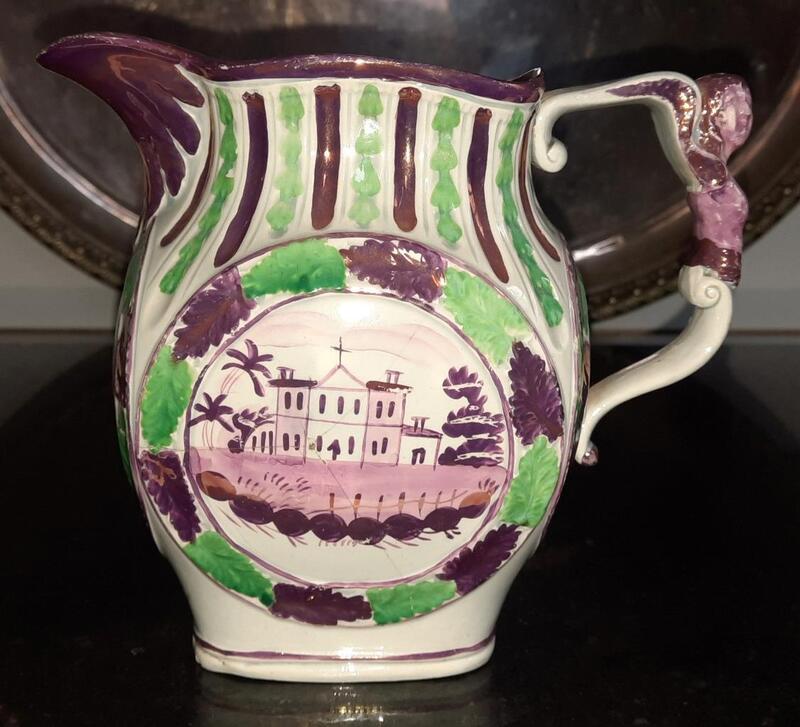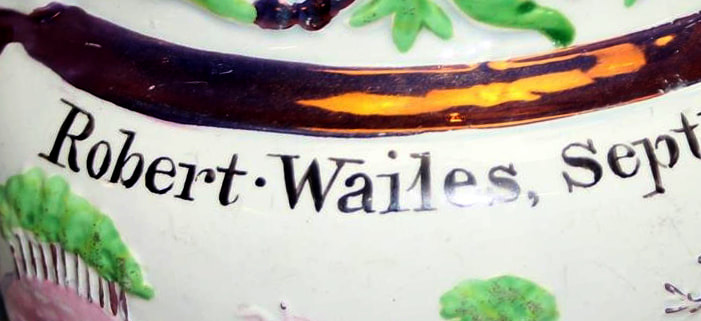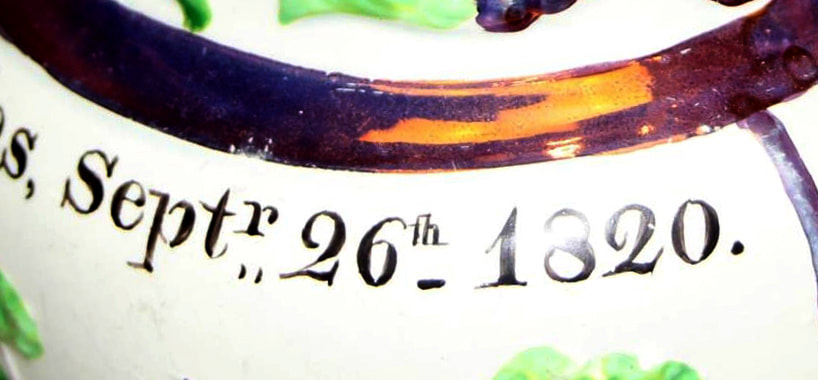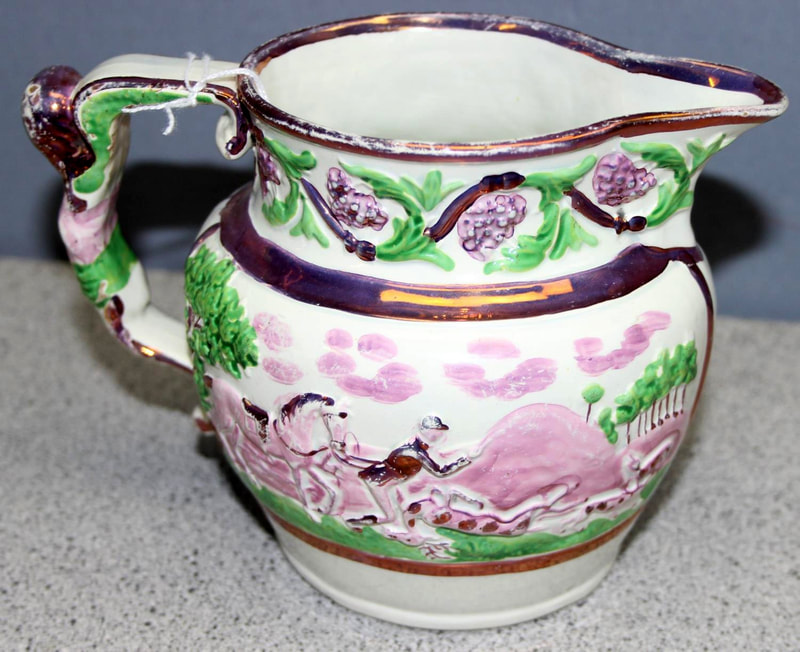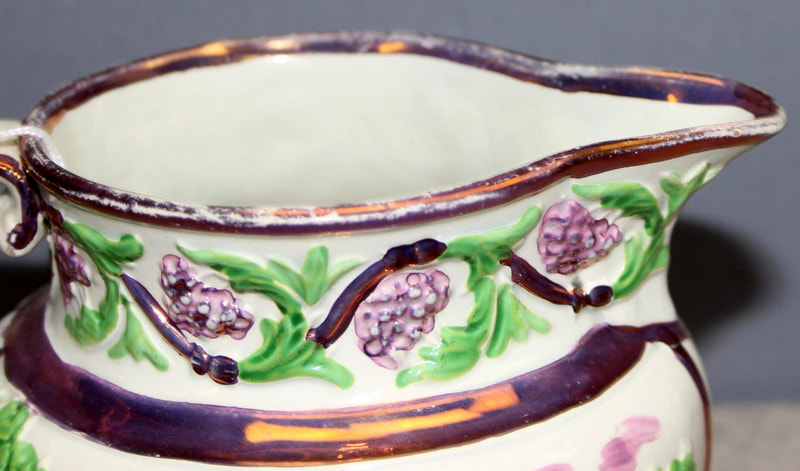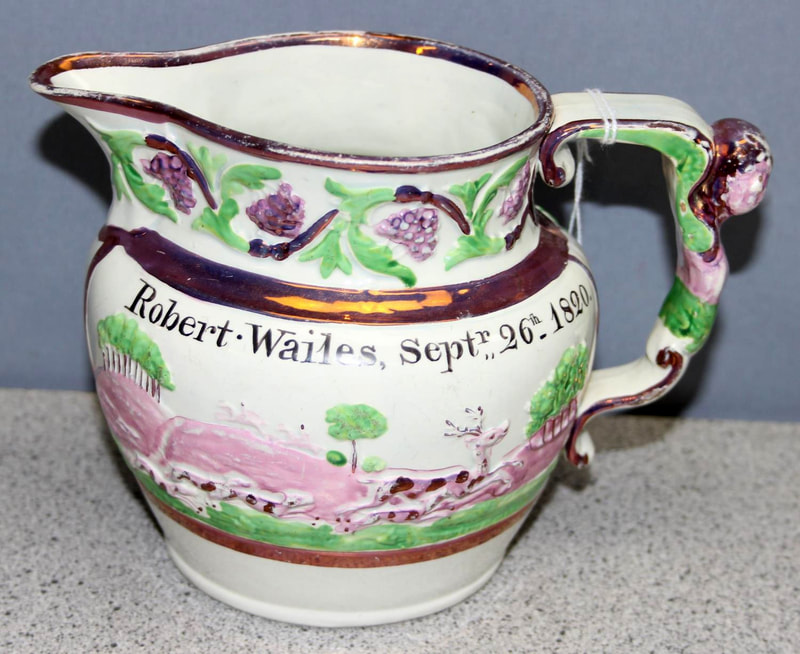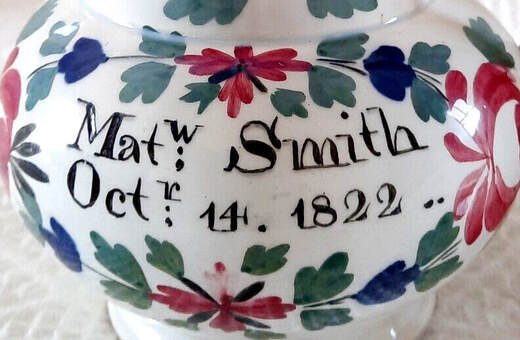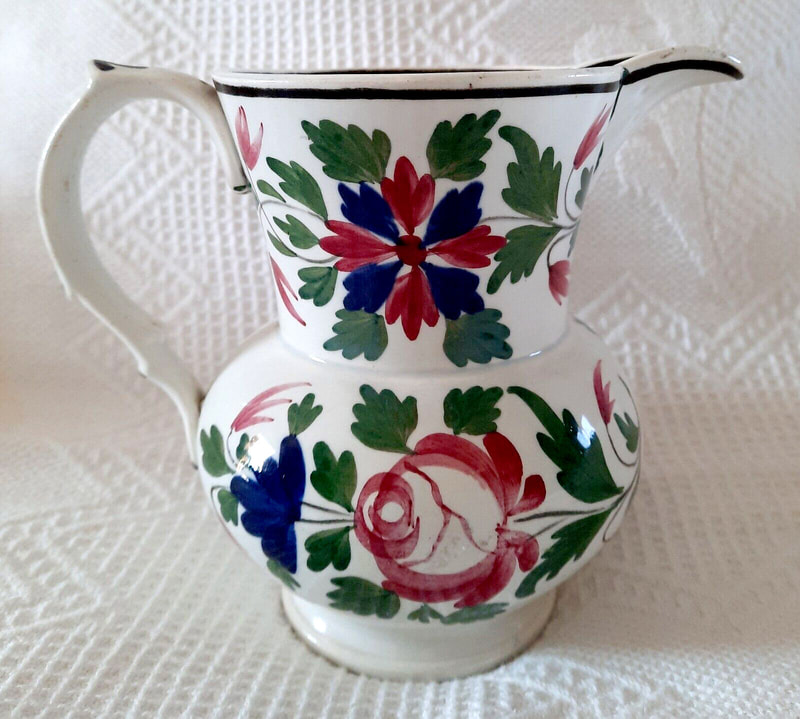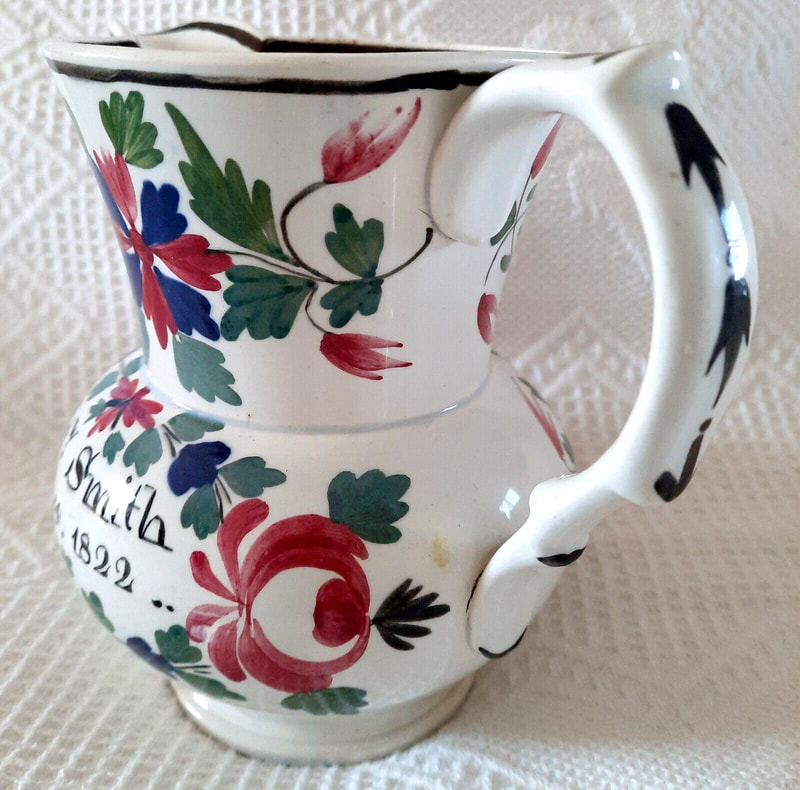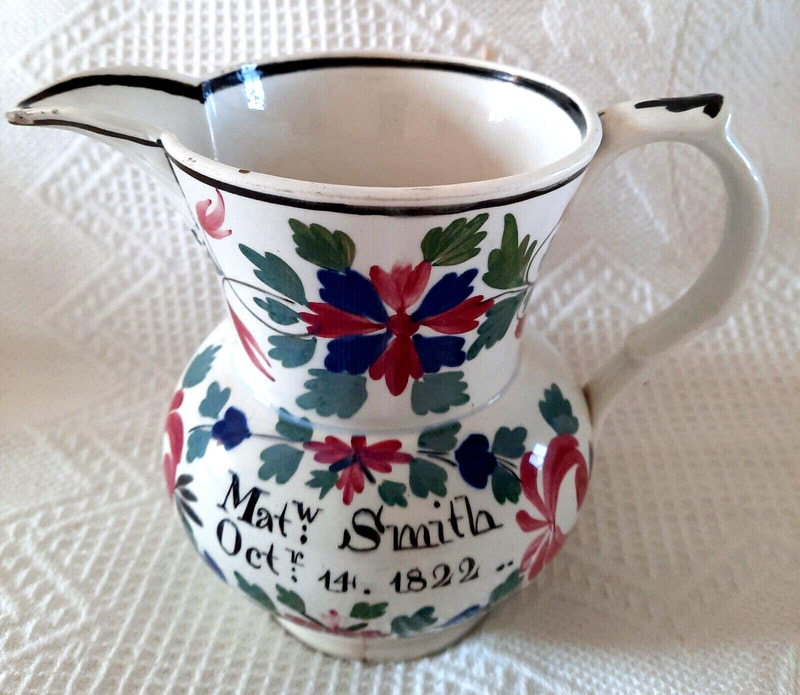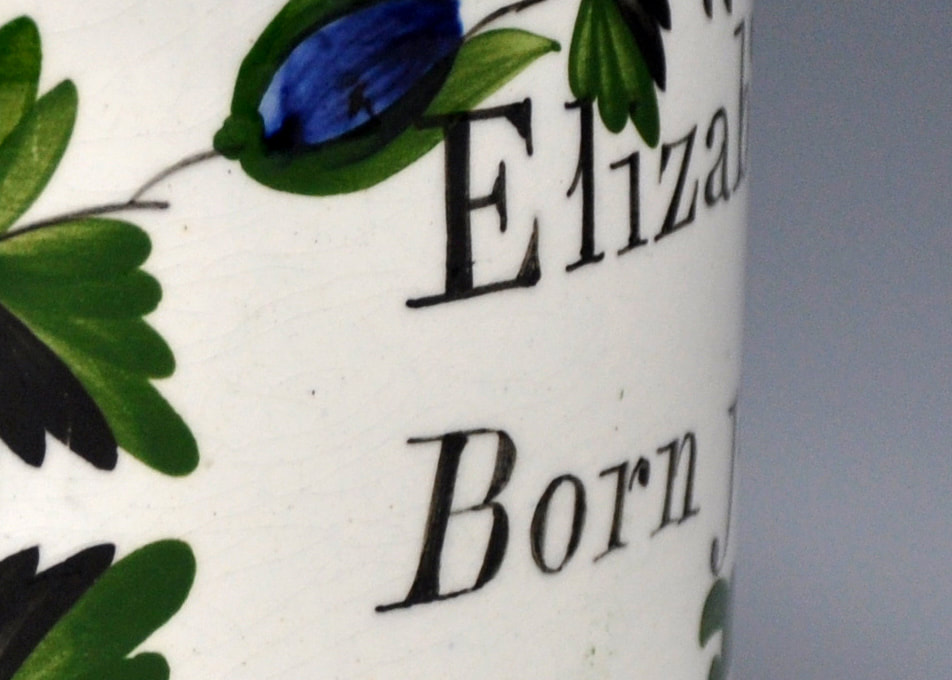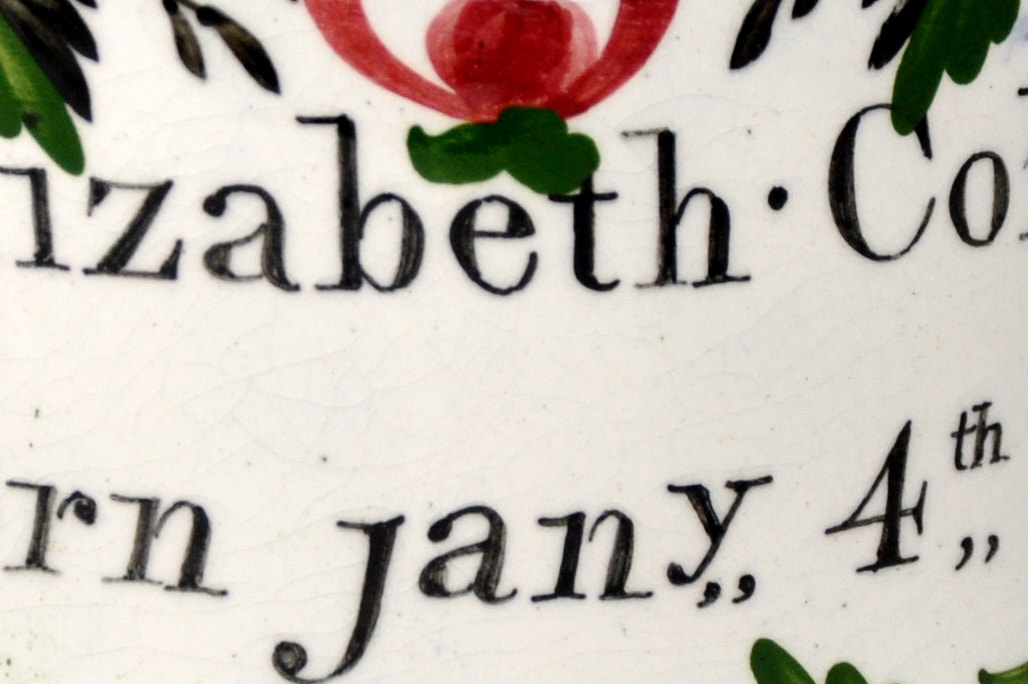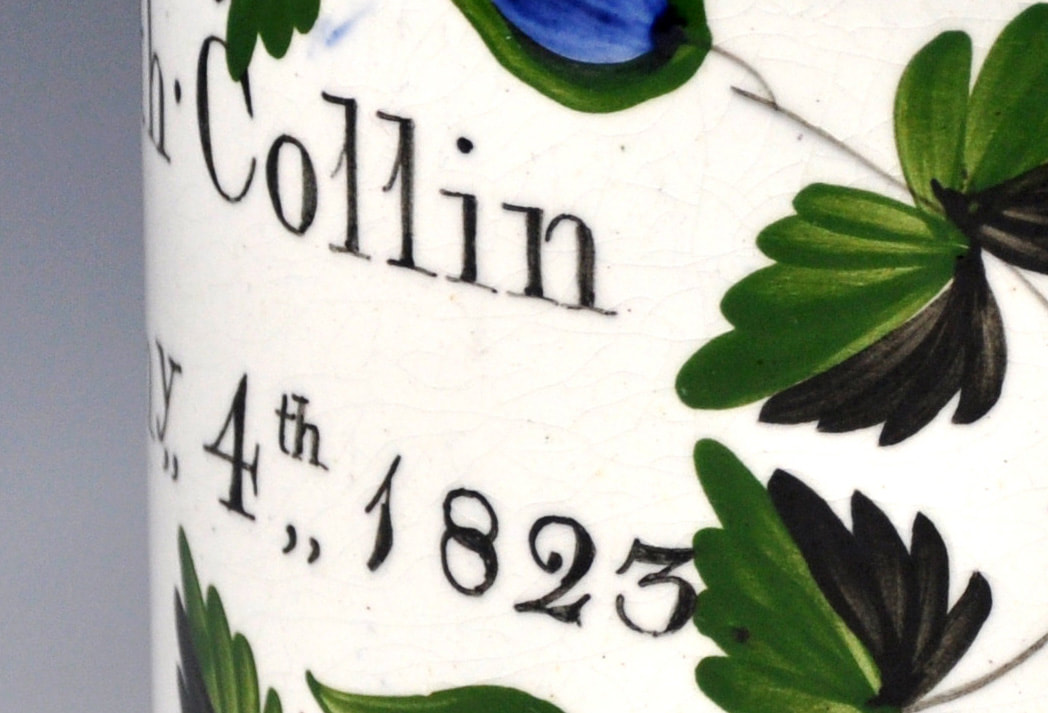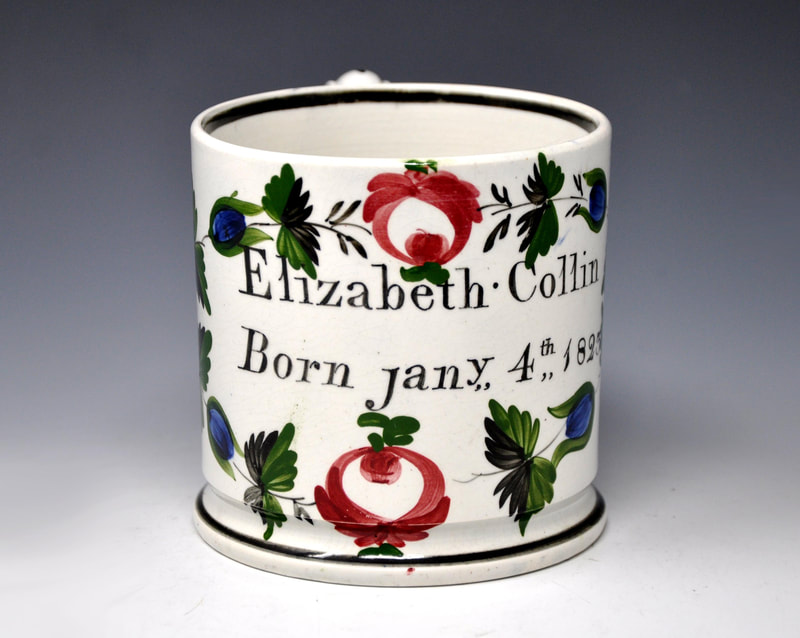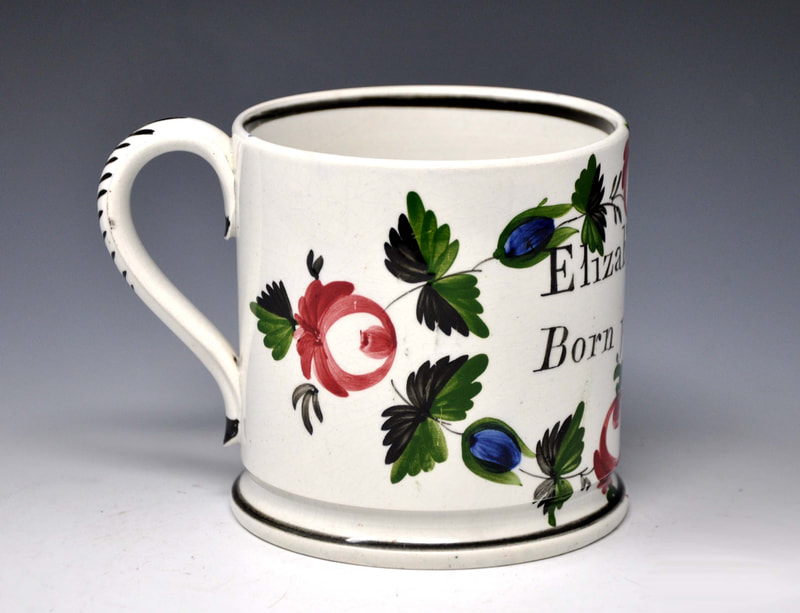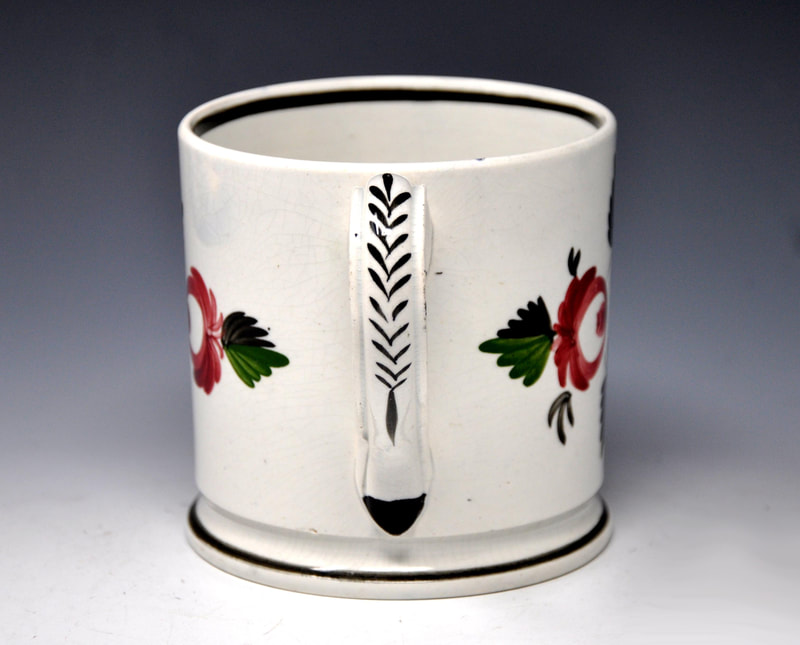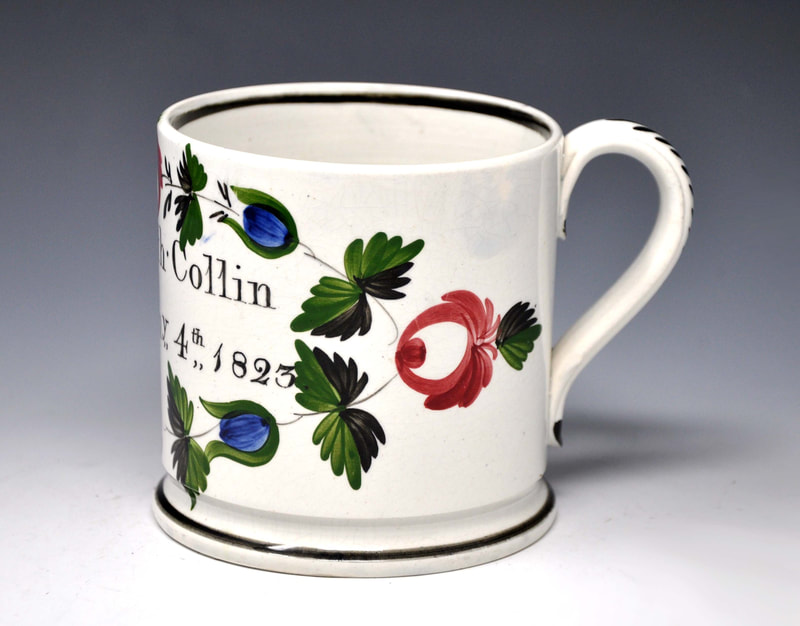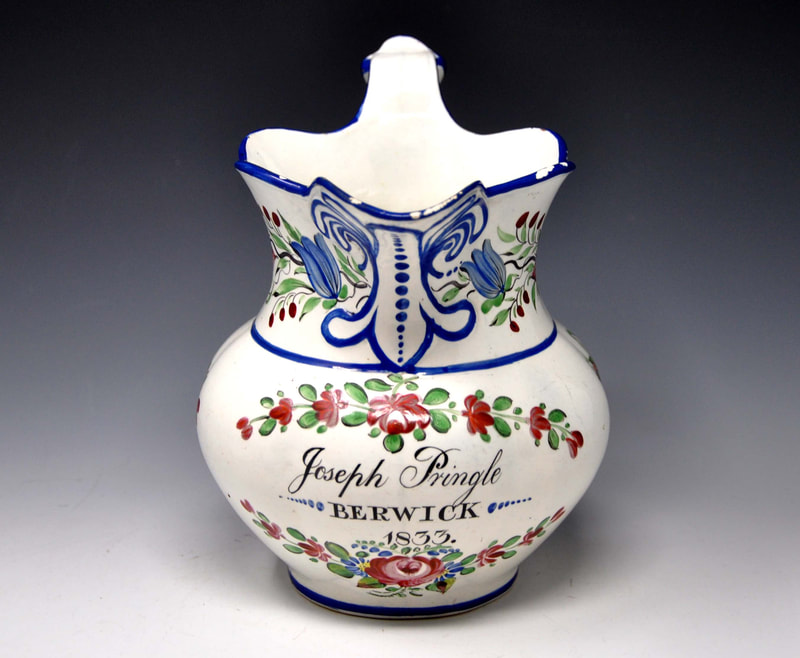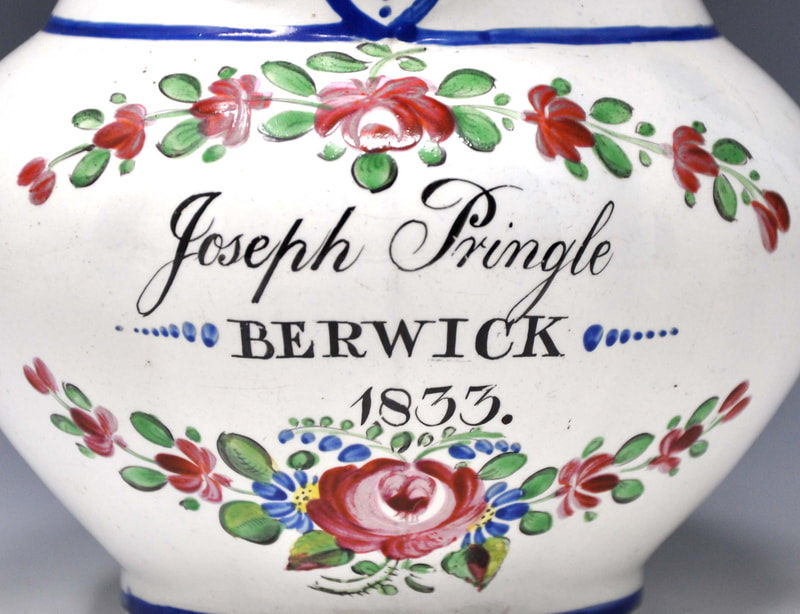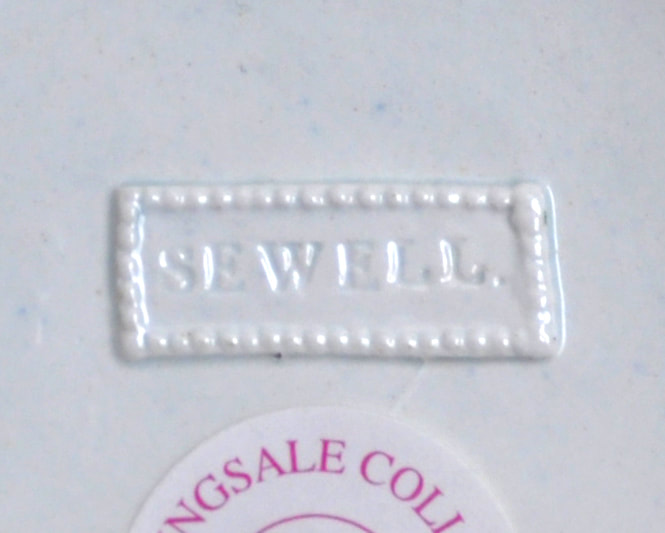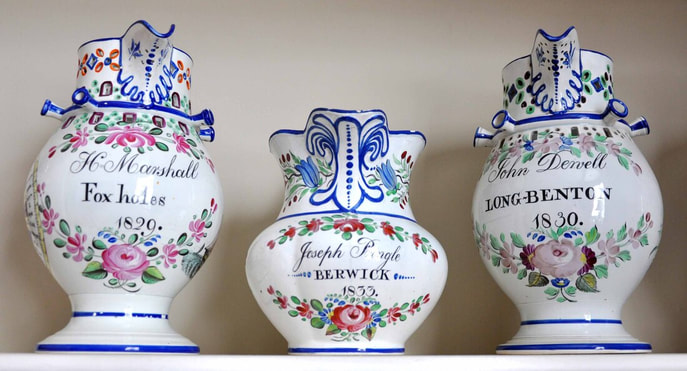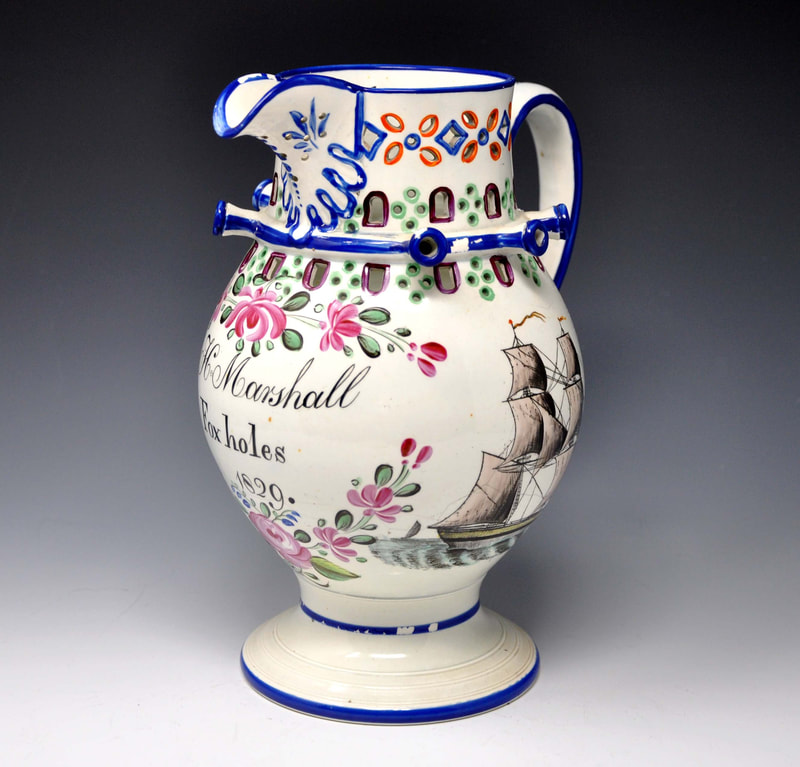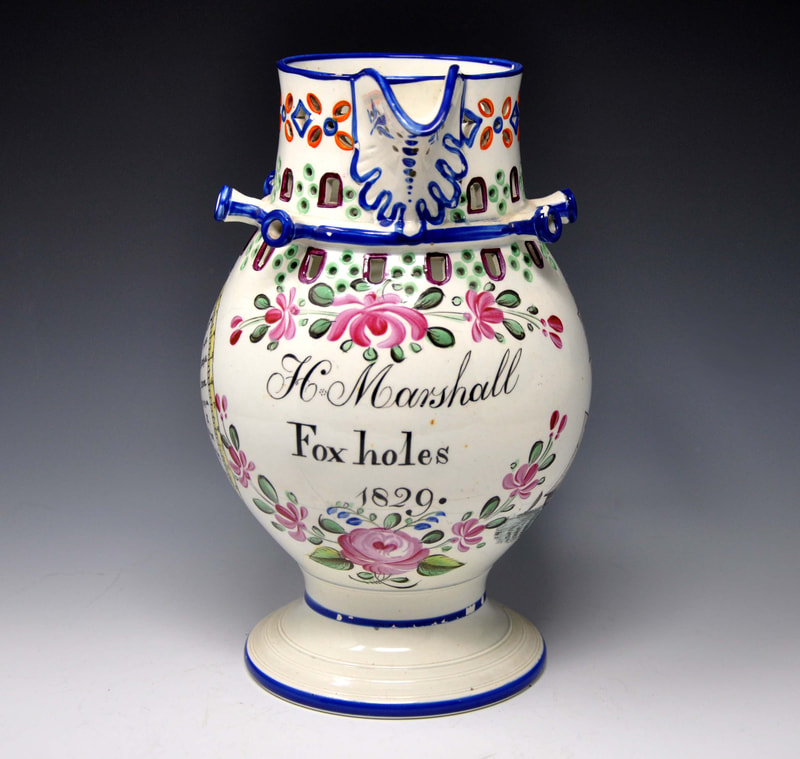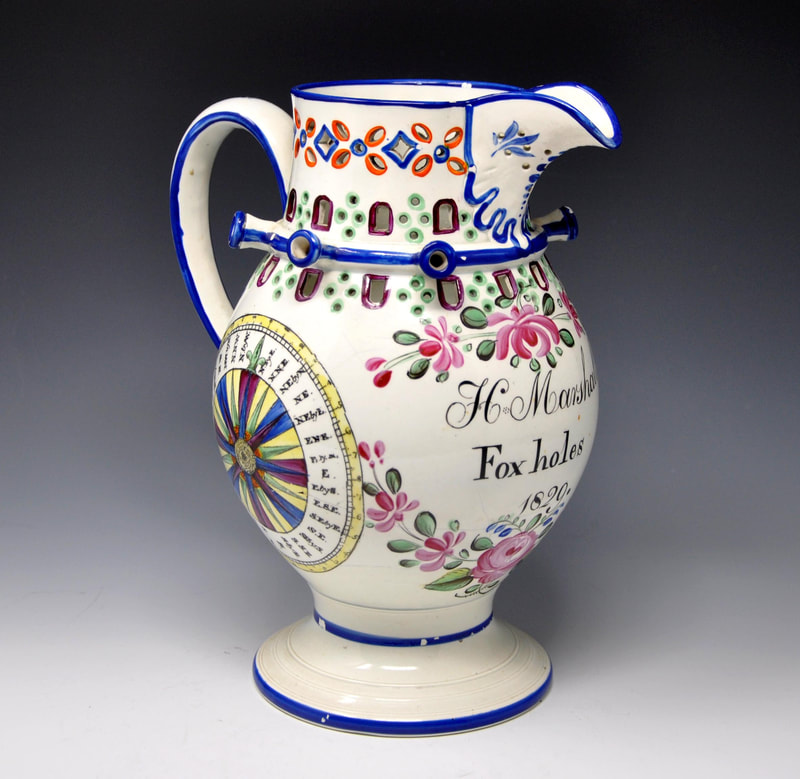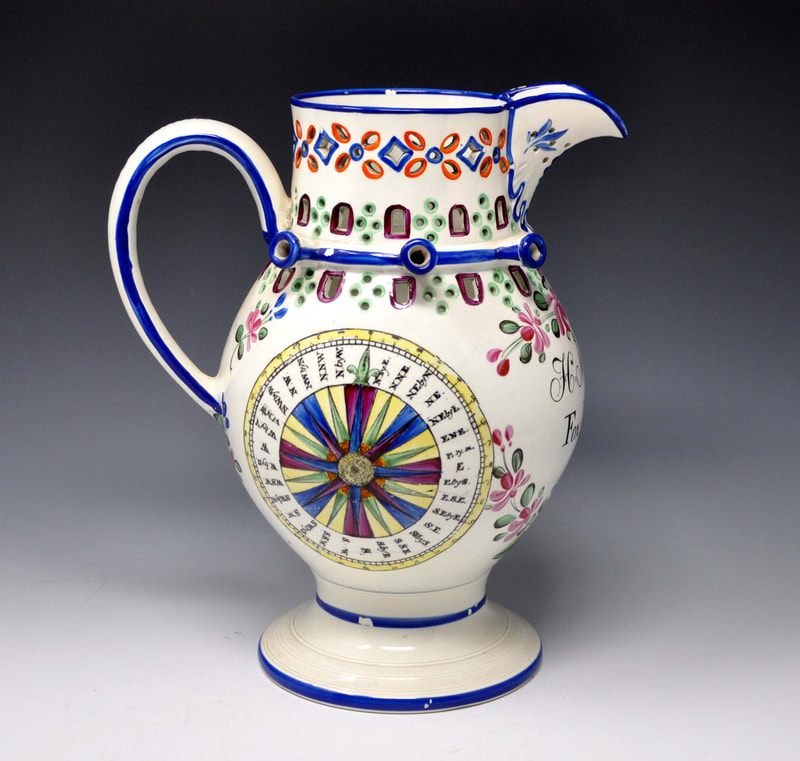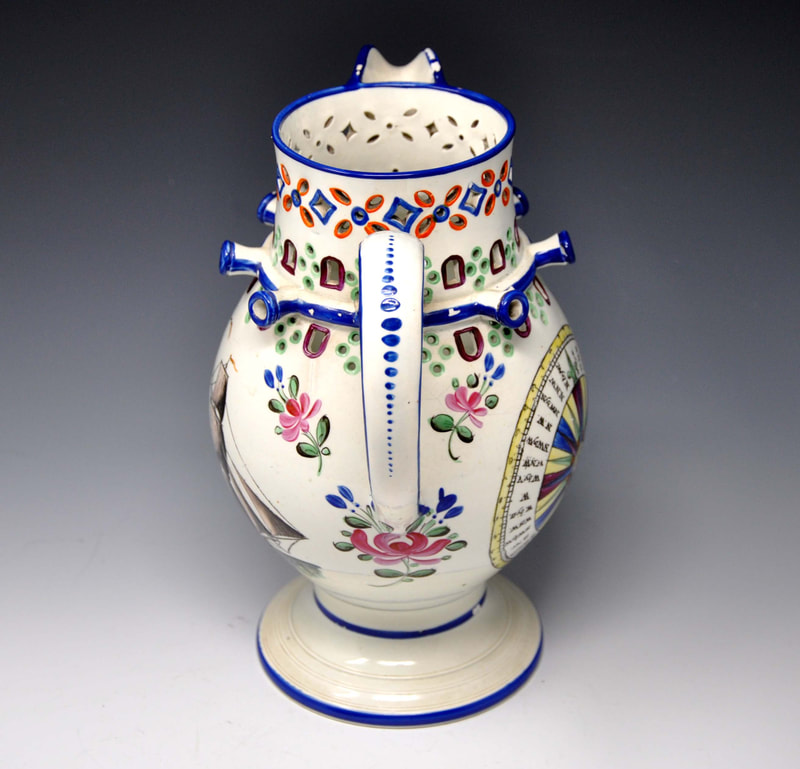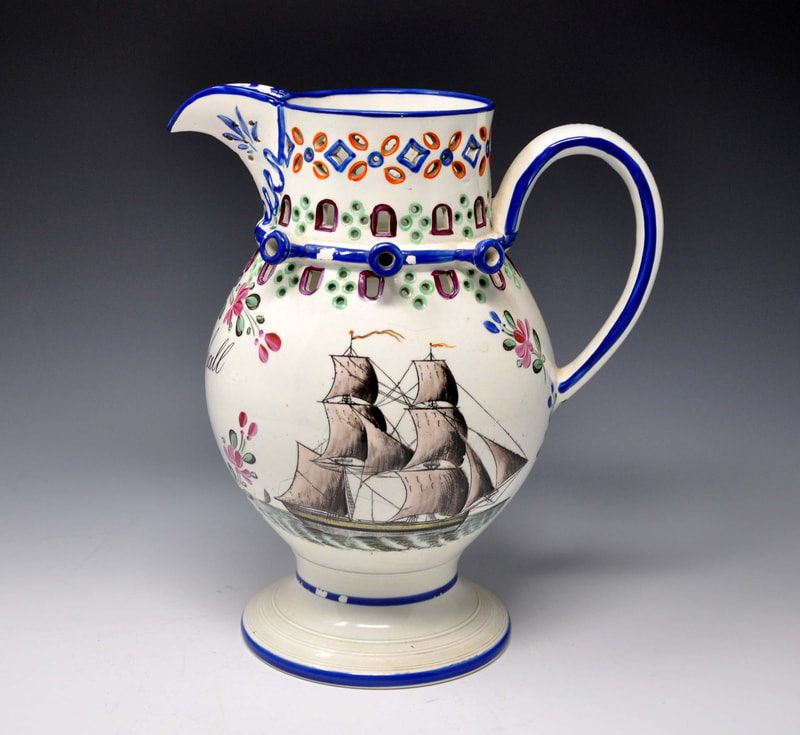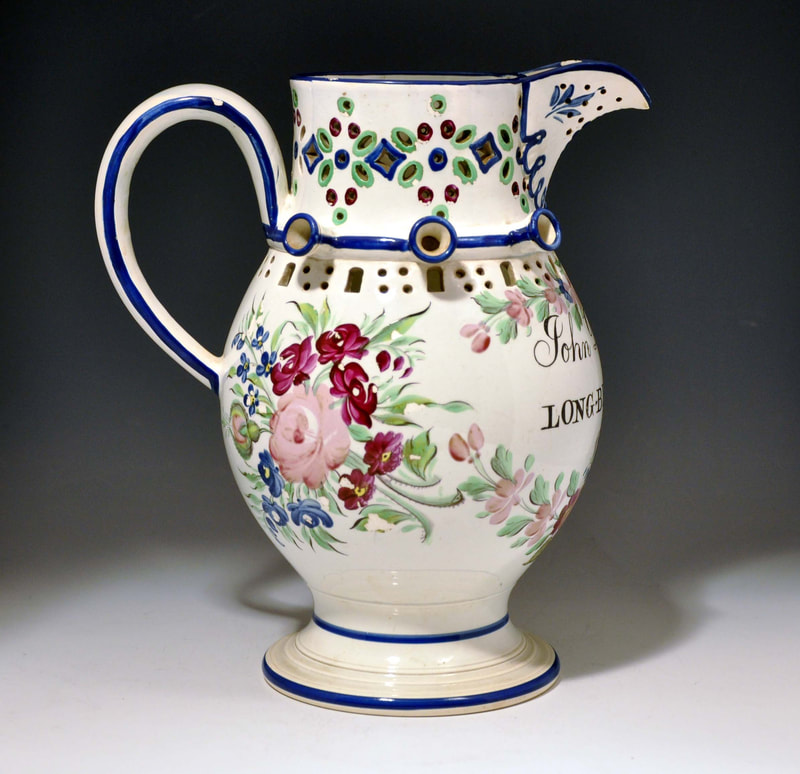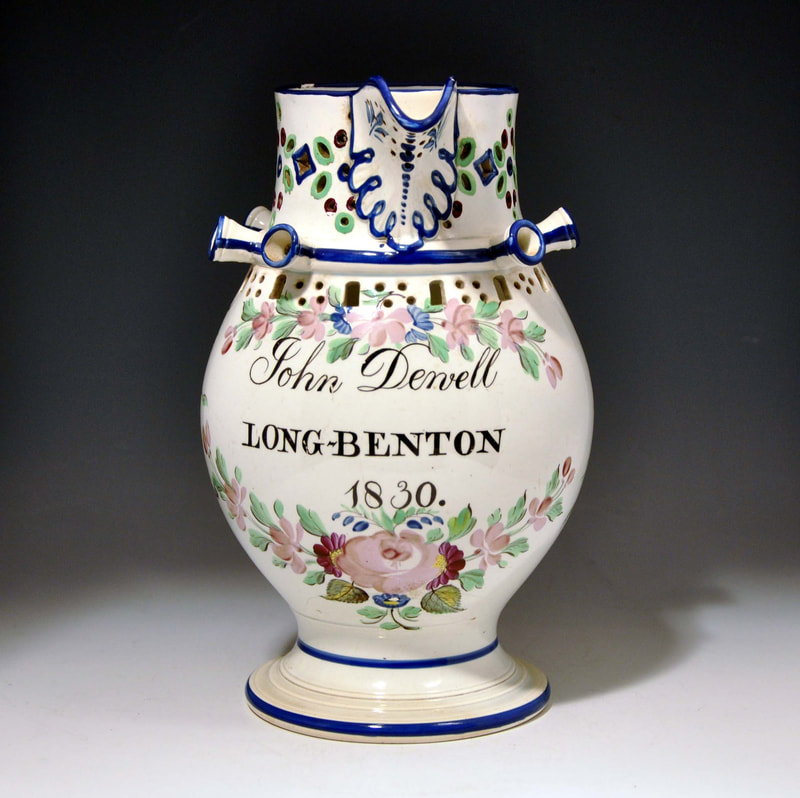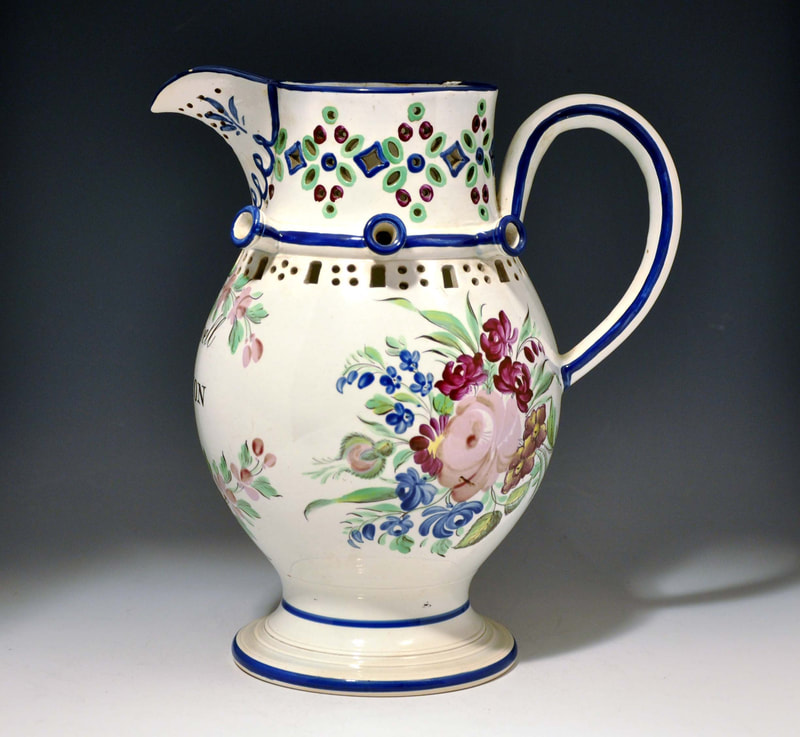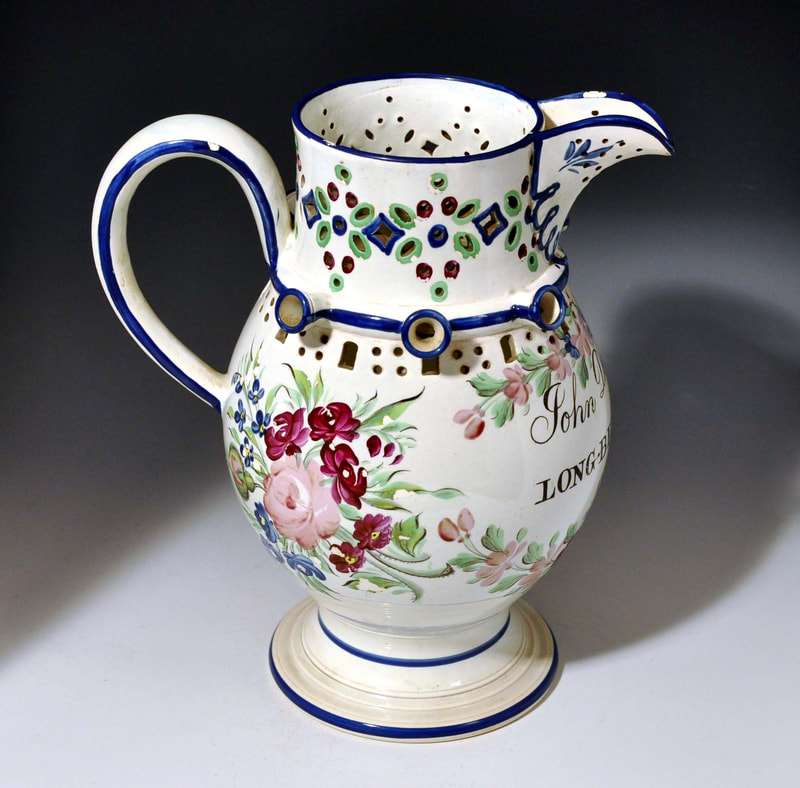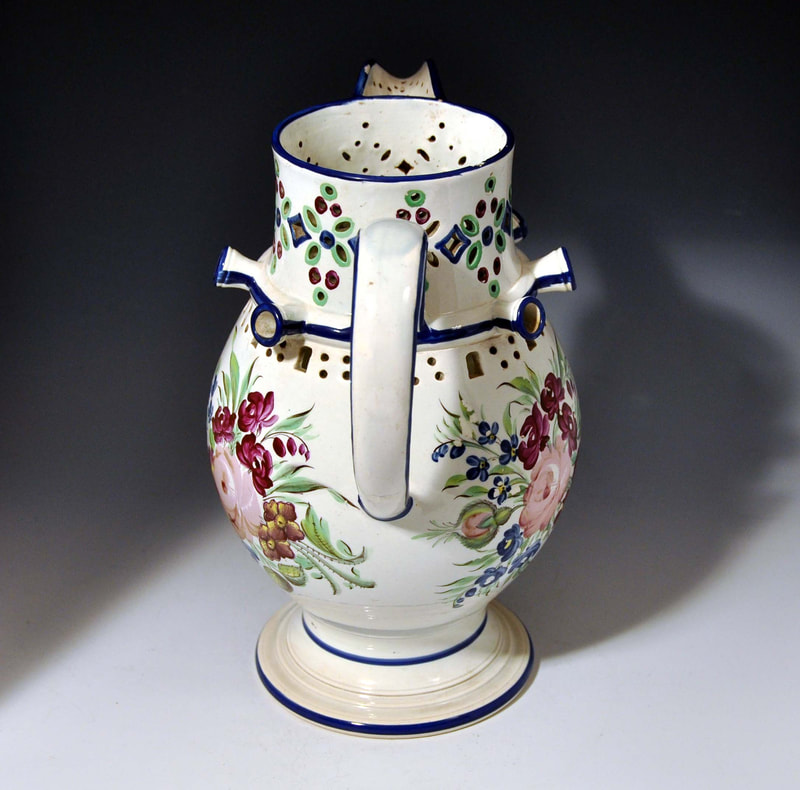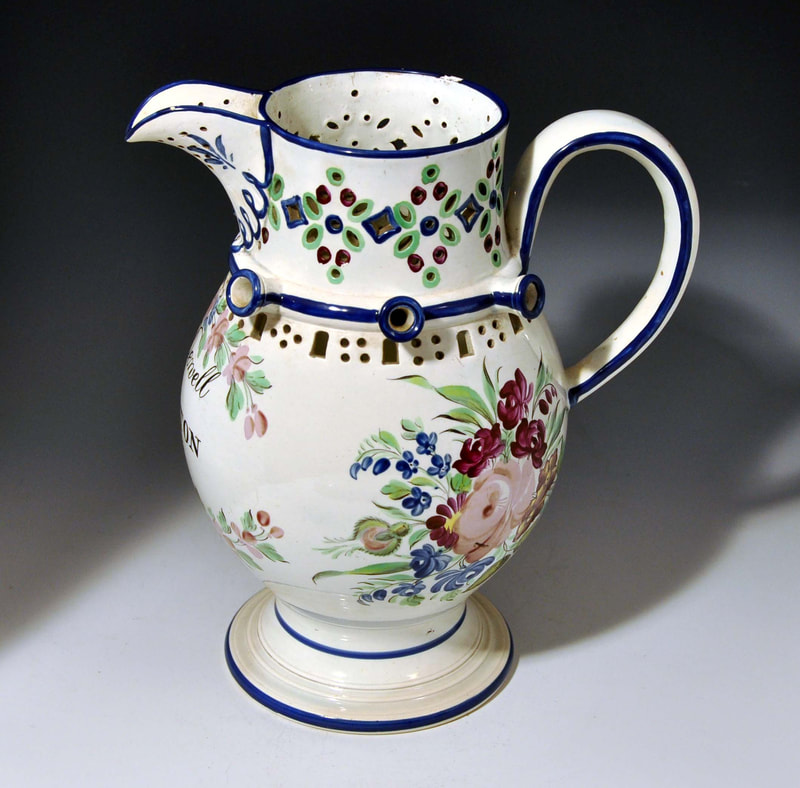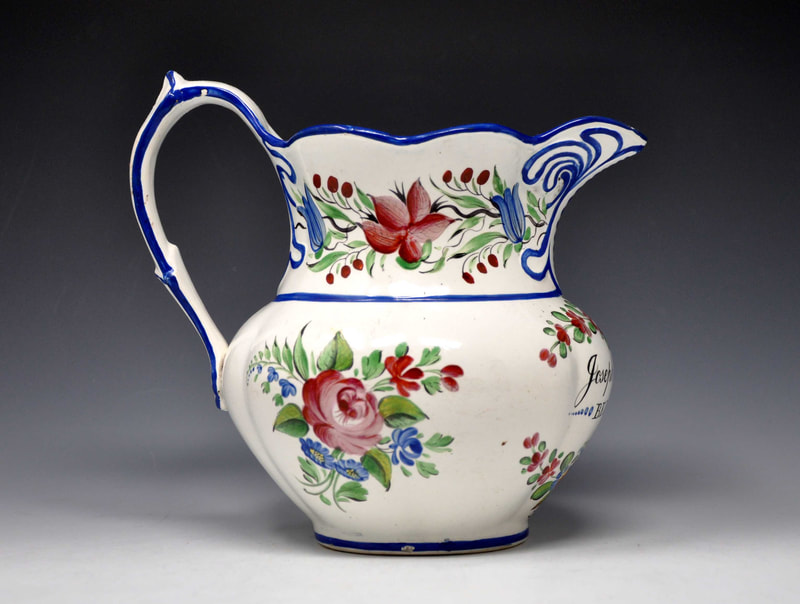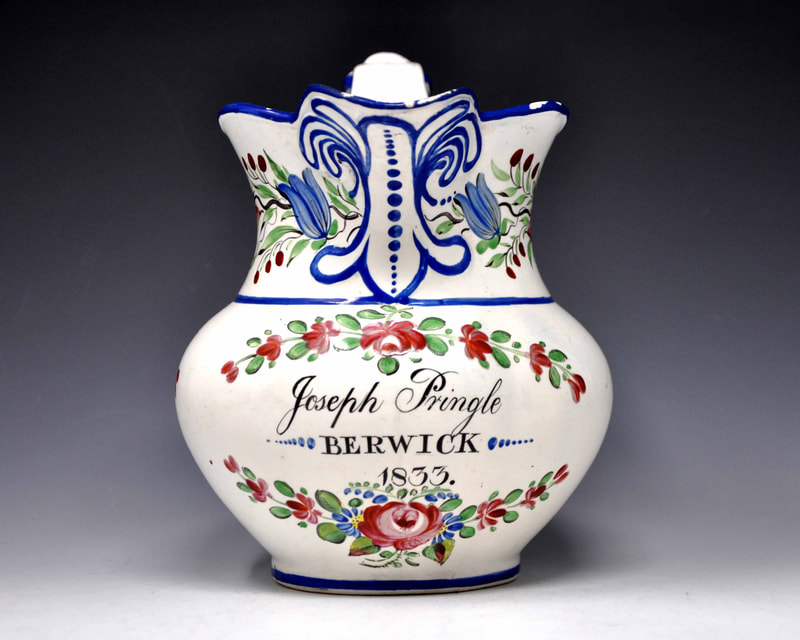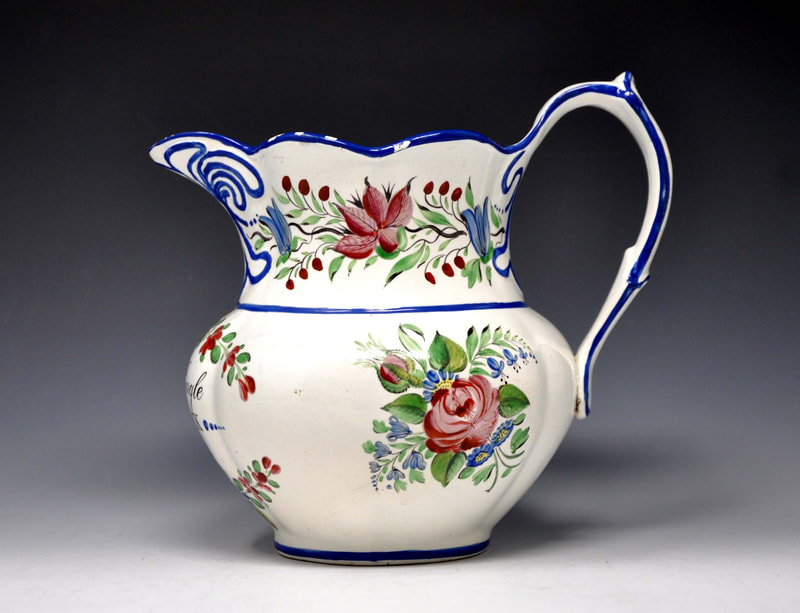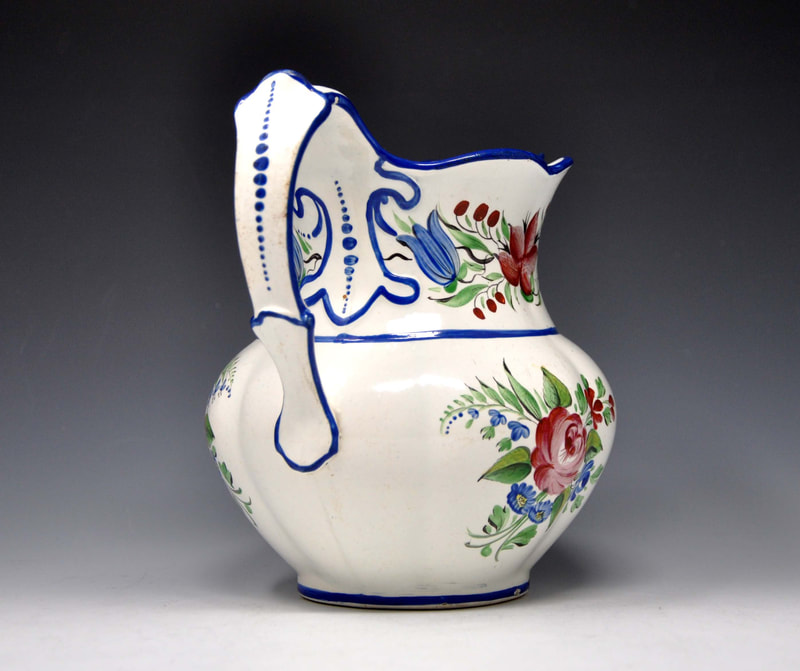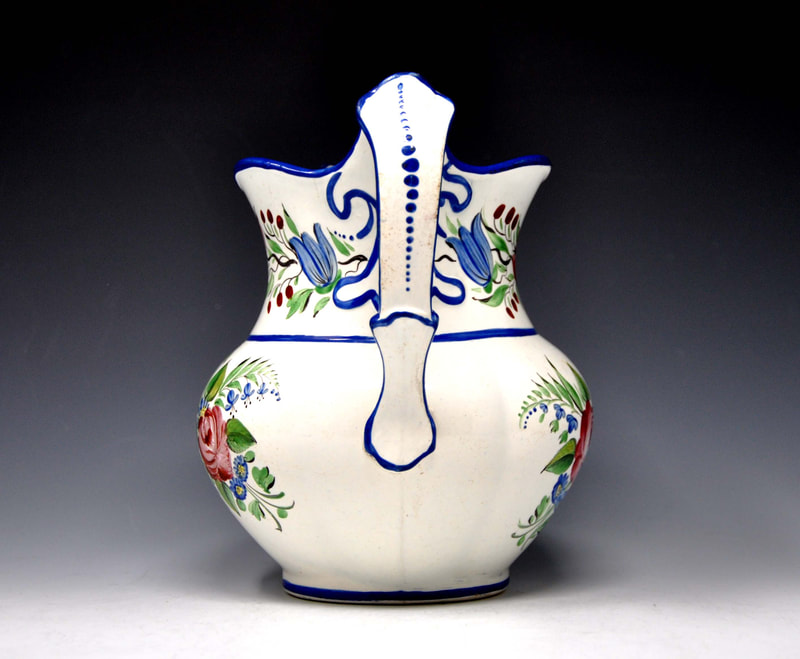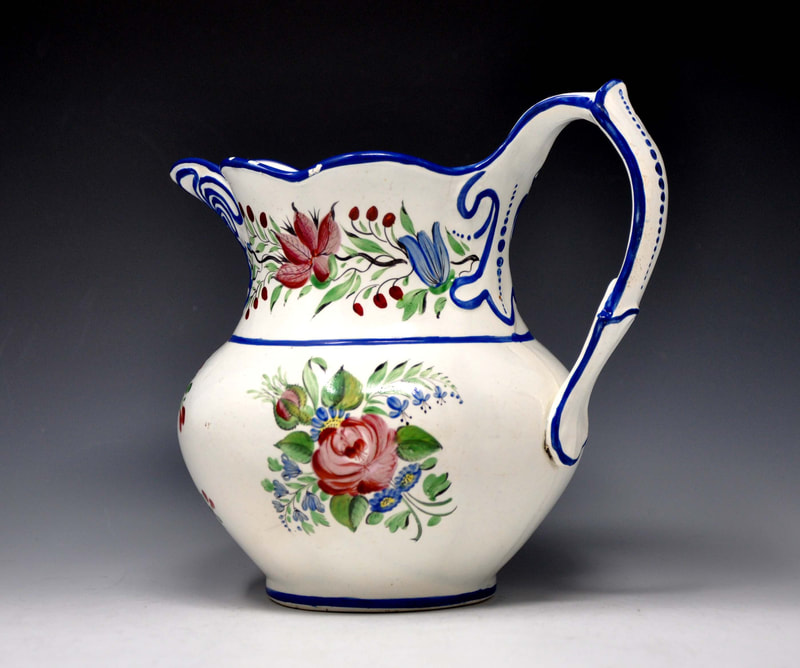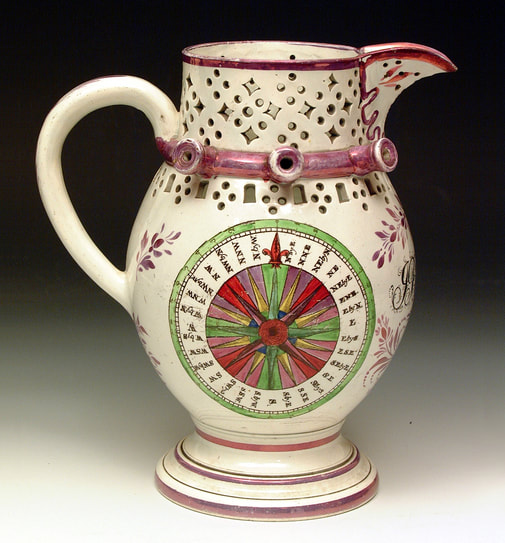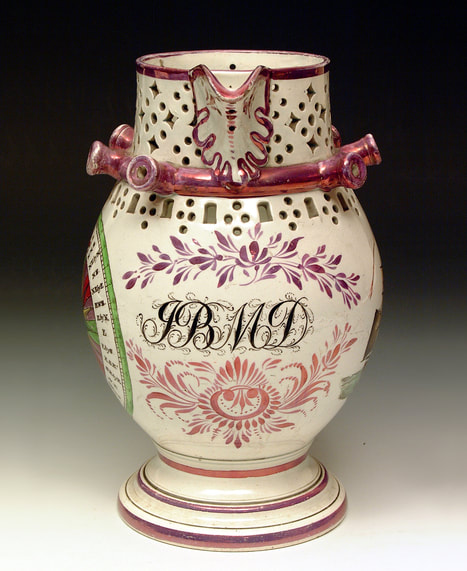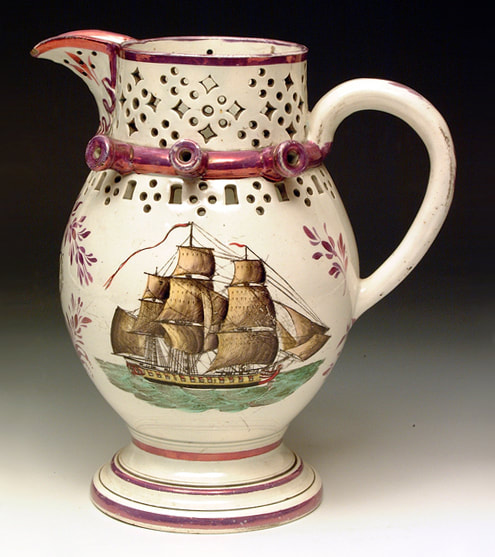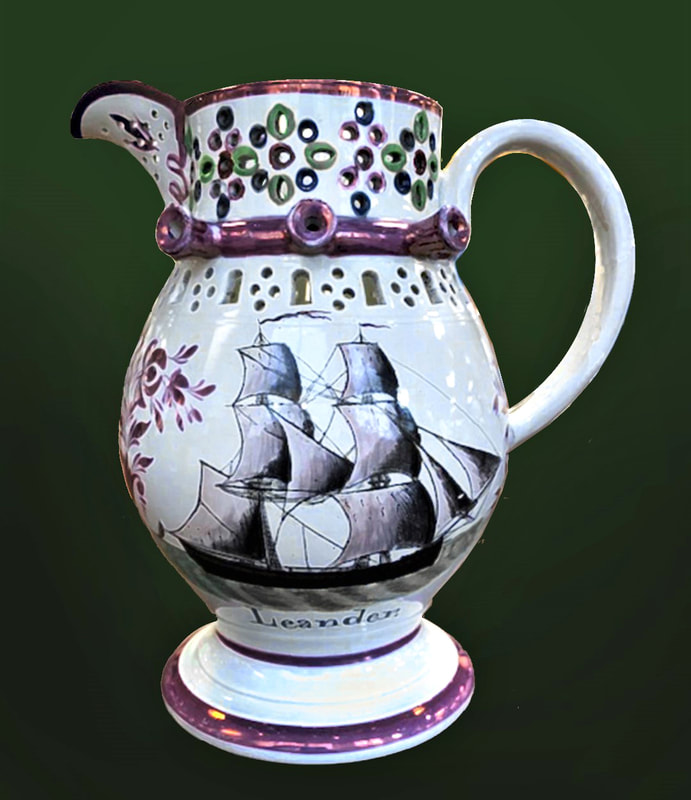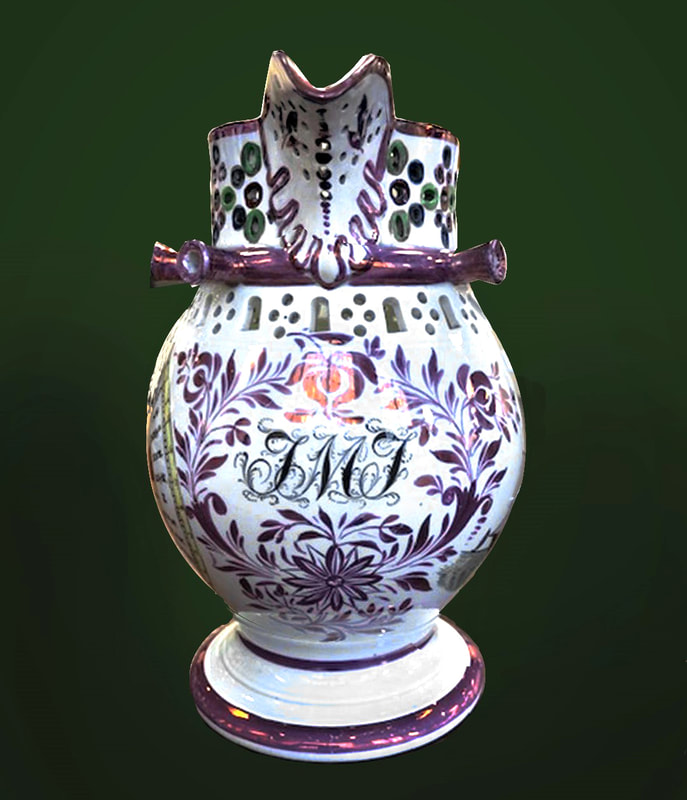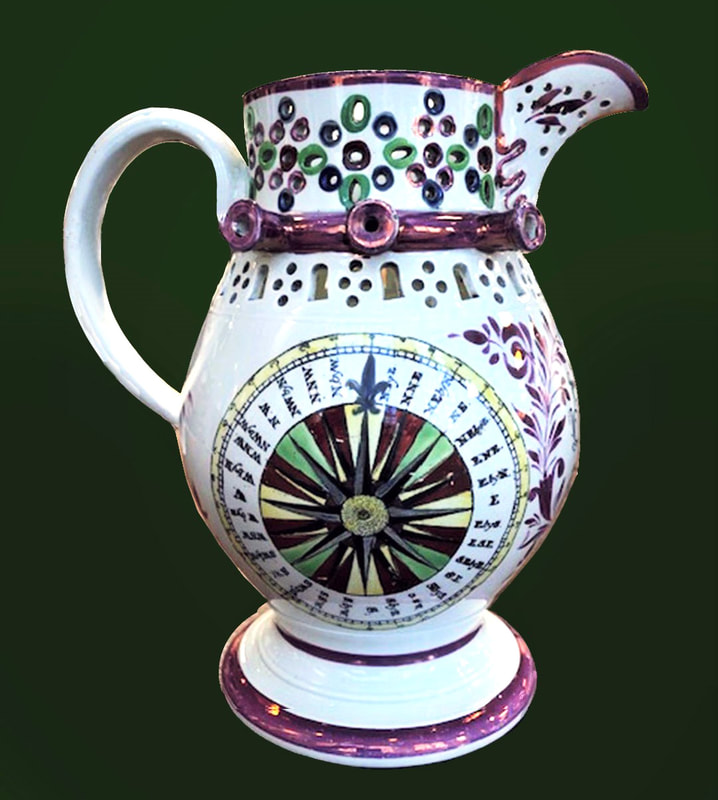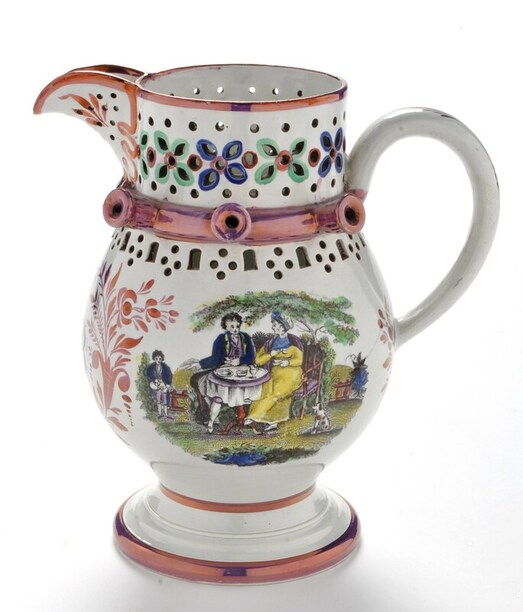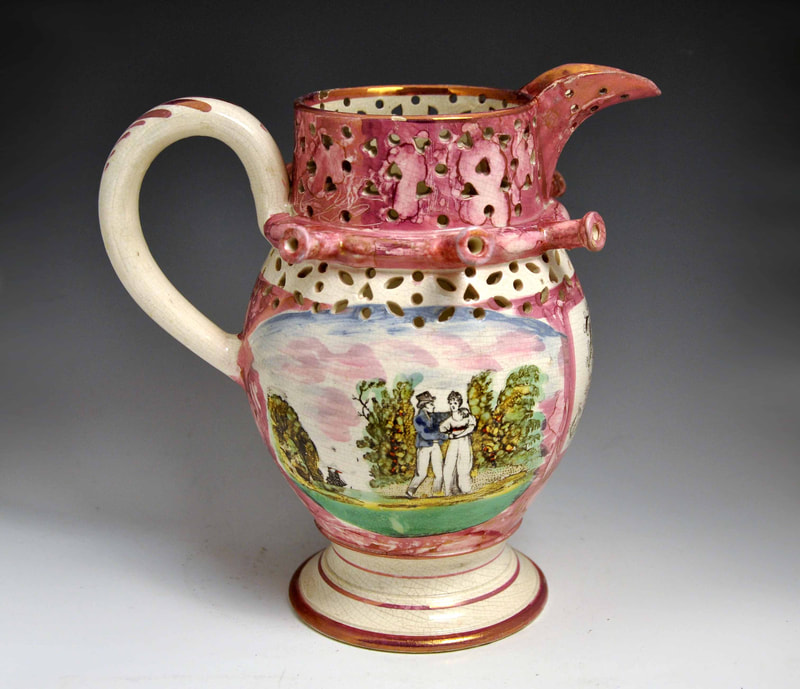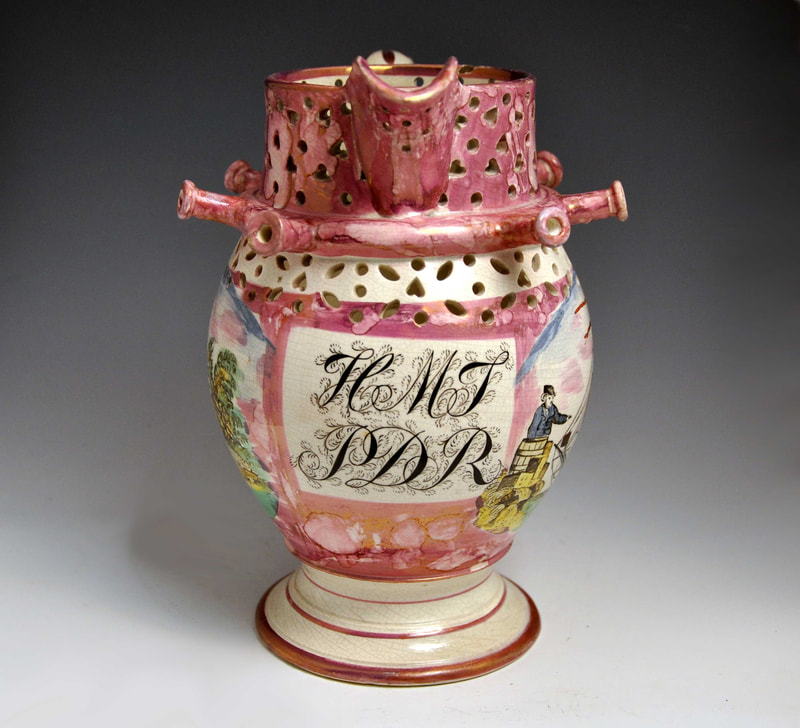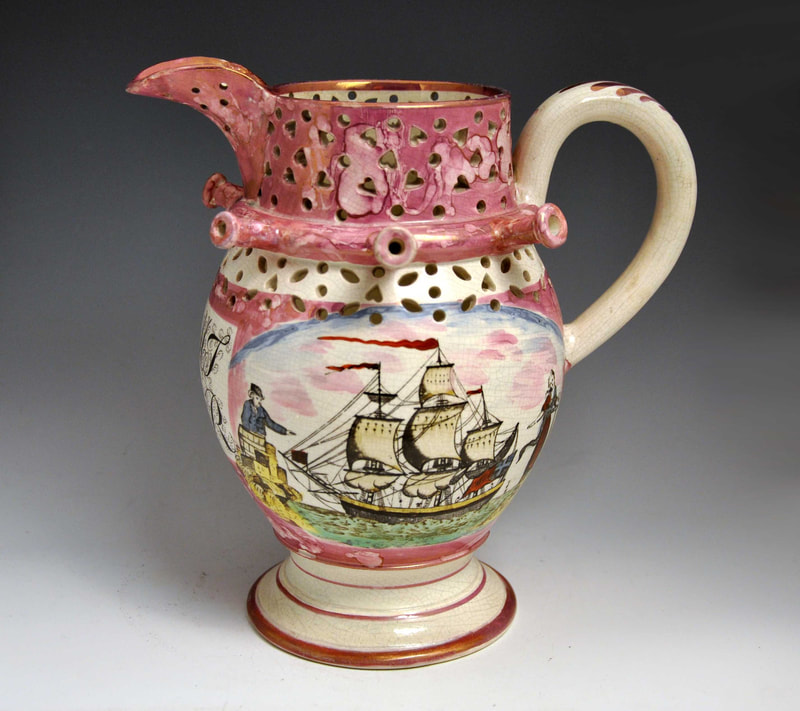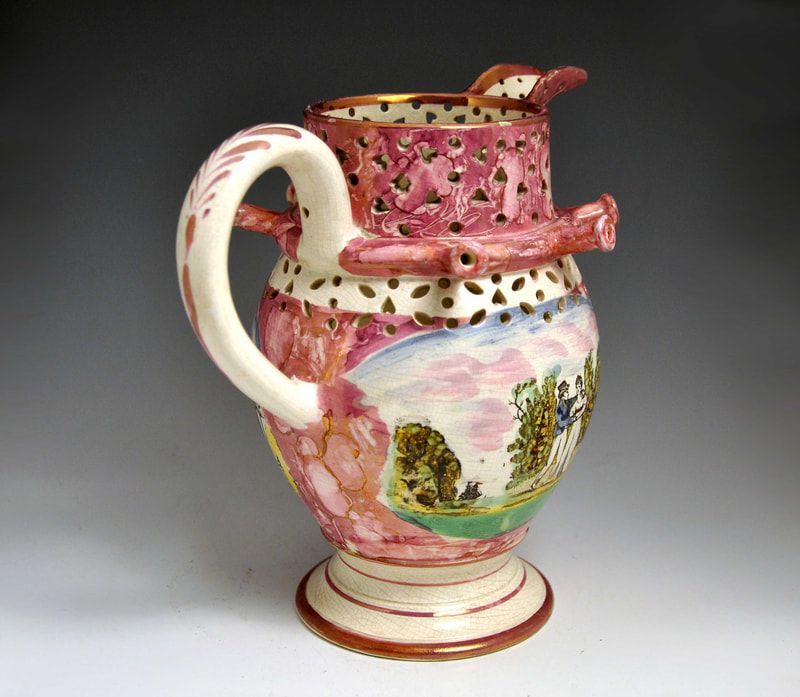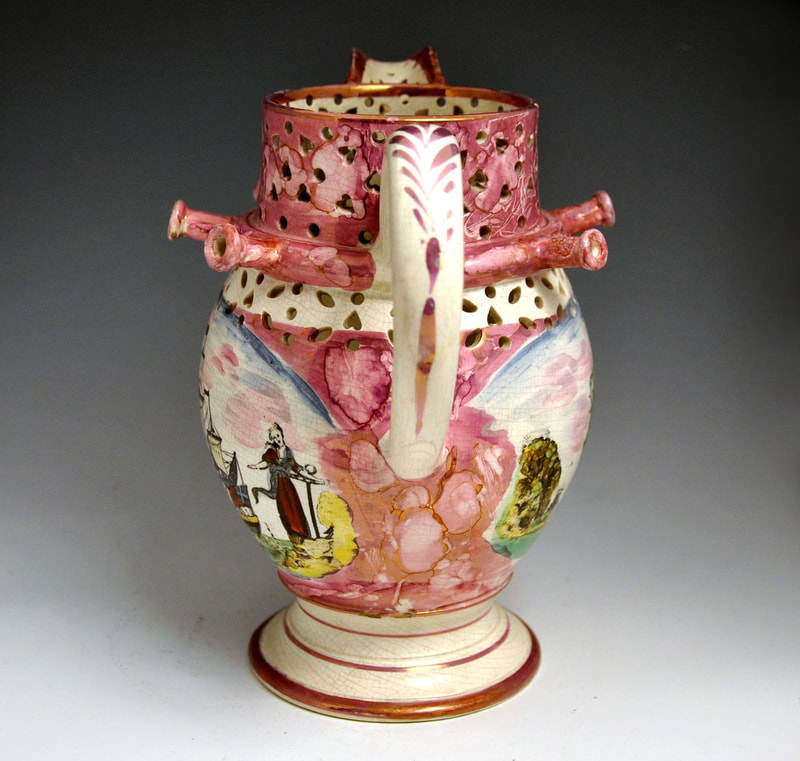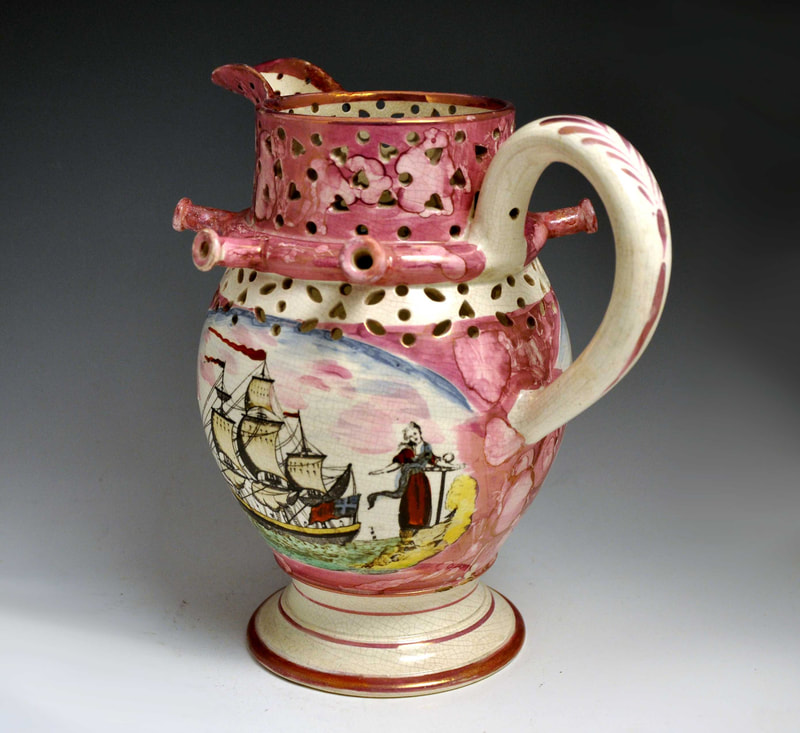Sewell & Donkin, St Anthony's Pottery – early inscriptions
Early export wares
This plate and the one below are discussed in the Northern Ceramics Society Newsletter 134, June 2004, p29 by their former owner, Harold Blakey. If they look quite like nothing else on this page, that's because they were decorated in Holland. The text on the first plate expresses gratitude to the Russians by supporters of the Dutch monarchy in 1813.
God (sent) by the power of the Russians
Our prince back to us as King
And confirm the Salvation of Holland
By favourable turn on turn
May the Russian Alliance be (???)
And Liberty be evermore preserved
And the Service of God remain (???).
The second plate below, perhaps made to celebrate a family occasion, is dated 1819. Both plates have Sewell & Donkin impressed marks.
God (sent) by the power of the Russians
Our prince back to us as King
And confirm the Salvation of Holland
By favourable turn on turn
May the Russian Alliance be (???)
And Liberty be evermore preserved
And the Service of God remain (???).
The second plate below, perhaps made to celebrate a family occasion, is dated 1819. Both plates have Sewell & Donkin impressed marks.
Lambton and Powlett election items attributed to Sewell
To date, I've not found a marked Sewell item relating to Lambton and Powlett's election campaigns for Durham County, in either 1820 or 1826. However, Sewell & Donkin are known to have made relief-moulded jugs. Note the grape-vine motif on the collar of the marked jug below, which also appears on the unmarked political items.
The jug above appears in Joseph Sewell's 'Book of Designs' (see Moore/Blakey, 1993), whereas those below, with what might be described as a 'figurehead' handle, do not. Thomas Fell, at the nearby St Peter's Pottery, is also known to have produced relief-moulded pottery with vine motifs.
Ian Holmes owns a fabulous Dixon, Austin jug with inscriptions for Lambton and Powlett in 1820, so it seems likely these jugs were made in 1820, for the earlier election. Note the 'L' in Powlett is crossed.
Similar items from the 1820s
I'm less certain of a Sewell attribution for the the next three items. However, the distinctive lower case 'f' is very similar to the Lambton mug above, and the 'C' of 'Crawford' is a good match for the 'Cheviot' jug below. This shape of handle is known to have been used by Sewell and appears in his 'Book of Designs'. Note also the use of green enamel, which appears on many of the items on this page.
This jug pairs with the one above, but has a cottage on one side and a building with a flat roof on the other. Michael Gibson lists this pair of jugs as 'probably Staffordshire', but in my view they are certainly made in the North East.
Note that on this jug the lower case 'L' is not crossed, which is a cause of concern for a Sewell attribution. However, the capital 'C' is very similar to the items above. This jug has a wide spout similar to the Sewell-impressed jug at the start of this page.
Although these jugs don't have inscriptions, I've included them because of their cottage decoration. Note the handles match those on the Lambton jugs.
On this jug, the lower case 'L' is again crossed. Compare that to the later Sewell puzzle jugs below
1820s' items with hand-painted flowers
The flared terminals of the capital 'S' of the script on this SEWELL-marked plate are distinctive (compare with the jug above), and the flower decoration ties in with the objects below.
The mug again has distinctive leaf and flower decoration. It is attributed to Sewell based on similarity of inscription to the items above. Note the date format and the lower case 'L', and compare them with The 'Robert Wailes' jug above. I'm indebted to Norman Lowe for the following information. Elizabeth Collin was born 4 January 1823 and baptised 13 January 1823 in Gateshead. The pot painter went on to make similar items for the Sheriff Hill Pottery in the late 1830s. Read more on that below.
Below, two Sewell-impressed plates (Harold Blakey describes the mark on the right plate as 'SEWELL in a bow and the numeral "2"') with similar leaves and flowers.
Sewell & Donkin, St Anthony's Pottery – later inscriptions
Occasionally, a marked item comes along that causes an exciting shift in attributions. The 1833 jug below has a lovely impressed 'SEWELL.' mark within a raised beaded frame.
Previously, I'd attributed the puzzle jugs to Sheriff Hill on the basis of a Wesley plate marked 'J.&P' (Jackson and Patterson) with identical script. Jackson & Patterson ran the Sheriff Hill Pottery from 1833. However, it is clear now that the pot painter / enameller first worked at St Anthony's Pottery (Sewell & Donkin), until at least 1833, and then moved to Gateshead and started work for Sheriff Hill some time before 1839. Read more about Sheriff Hill inscriptions here.
|
This (larger than usual size) mug and saucer have some obvious similarities of script to the puzzle jug above (left detail). They are from the Joyce and Jack Cockerill collection, and were likely sourced by their contact in Belgium. Sewell must have had close links with their Northern European distributors to be able to take on commissions for personalised items. The saucer has a SEWELL impressed mark. |
Pink lustre puzzle jugs with monograms and lustre garlands
The Sunderland Museum & Winter Gardens, Tyne & Wear Archives & Museums catalogue attributes the jug below to Dawson's Low Ford Pottery. Although Dawson did make puzzle jugs (see here), they are smaller and less bulbous in form. The Museum catalogue states '19th century creamware puzzle jug given as wedding gift to John Burnop and Mary Douglas, 1828'. The elaborate initials are similar to those on the other pink-lustre items below. The mariners' compass transfer is also common to items on this page.
Sewell produced multiple versions of this transfer on tea wares, often found in canary yellow.









